by Louise Irvine
If pots could talk what would they tell us? For over 30 years, I have been on the trail of the Maharaja vase. In a Highlights article in 2017, I posted A Tale of Two Vases featuring the colossal Doulton Faience vase, which was made for the Maharaja of Baroda in 1893. The story caught the attention of H. H. Radhikaraje Gaekwad, the current Maharani. We were thrilled when she wrote to us from Lukshmi Vilas Palace in India for information about the Royal Doulton pieces in her museum collection.
The Maharaja Vase
I have been intrigued by the Maharaja’s monumental Doulton Lambeth Faience vase since it first appeared on the market in 1986. The vase was rediscovered in an East Anglian country house estate and went to auction at Christie’s of London. It sold for a world record price of over £32,000 to an anonymous bidder, the equivalent of $125,000 in US dollars today. I featured the vase’s discovery in the Royal Doulton International Collectors Club magazine and for many years I included it in my lectures. I hoped to discover the giant vase lurking behind someone’s sofa, but it remained elusive.
It was not until I met Stuart Slavid of Skinner’s auction house in Boston that I learned the vase had been purchased by the late Warner Le Roy, who owned the Tavern on the Green in Central Park, New York. The Maharaja’s vase came back on the market at Skinner’s in 2011, when it was acquired by Arthur Wiener, the founder of WMODA. For a few years, it was displayed in his Hamptons home alongside other exhibition masterpieces before going on public view at the Wiener Museum. The move to Florida was a major undertaking by Arron Rimpley and the Whitley team as the vase stands 76 inches tall, weighs in the region of 500 pounds and takes three men to lift it.
Doulton Expertise
Creating such an enormous vase in 1893 was an amazing technical feat for the Doulton artisans. It was thrown on a potter’s wheel at the Lambeth Pottery in three parts, the neck, the foot, and the body which is 30 inches in diameter. The handles were made separately and attached at the shoulder. The profusion of exotic flowers includes palms, cactus and thunbergia, hand-painted in golden tones by Florence Lewis and the ladies of the Lambeth Studio. Miss Lewis was the head artist in Doulton’s Faience department, and she trained hundreds of young women how to paint on pottery. In 1883, she wrote a book on China Painting to guide amateur and professional artists through the complex processes. Miss Lewis won many medals and accolades during her distinguished Doulton career and she was responsible for several prestigious exhibition vases. Her biggest vase was proudly displayed at the Imperial Institute exhibition in London, which was opened by Queen Victoria in 1893.
Royal Commissions
We know from reports in the British press that the Maharaja commissioned several Doulton designs when he visited the Lambeth Pottery. We are still trying to locate the Doulton salt-glaze stoneware fountain in shades of green which was designed for the gardens of one of his palaces in Baroda. A photograph in the St. James Budget in 1894 shows a selection of Faience wares designed for the Maharaja. The tall vase, which stands 54 inches, first came on the market in Dorset, England in 1986. It was designed by Mark V. Marshall and hand-painted with tropical flowers by Florence Lewis. It is now on display at WMODA so it would appear that at least two of the Maharaja’s commissions never made it to India.
The Maharaja of Baroda
The Maharaja’s vase astonishes visitors in the reception at WMODA and has prompted interesting correspondence online. Most significantly, H. H. Maharani Radhikaraje Gaekwad came across the vase on our website and contacted us for information about the Doulton wares acquired by her family. Maharaja Sayajirao Gaekwad III (1863-1939) was a visionary ruler of Baroda and an enlightened reformer. He introduced modern banking and industry, established universal primary education and women’s equality, and built hospitals, colleges, and museums. During the Golden Age of his reign, Baroda became one of the most progressive states of India and an important cultural center. The Maharaja was the eighth richest man in the world and was a great patron of the arts. He was held in such high esteem by Queen Victoria, Empress of India, that she invited him to Windsor Castle during her Golden Jubilee year in 1887 and sent her personal carriage to receive him.
Lukshmi Vilas Palace
The Maharaja made numerous trips to Europe to choose art to decorate his palaces in Baroda. His vast Lukshmi Vilas Palace was completed in 1890 after 12 years of building. It was designed by Charles Mant in the Indo-Saracenic style with European influences and had all the modern conveniences including electricity and elevators. Spanning 100,000 square feet and with more than 170 rooms, it was reputed to be the largest private residence ever built and is four times larger than Buckingham Palace in London.
The palace was embellished with Carrara marble, crystal chandeliers, stained glass windows, and Venetian mosaic floors installed by craftsmen from all over Europe. The magnificent Durbar Hall was the setting for state banquets and cultural performances. Italianate courtyards inside the palace feature water fountains and lush plantings of soaring palms. The palace estate was landscaped by a specialist from Kew Gardens in London and houses the Maharaja Fateh Singh Museum, which used to be the schoolhouse. A miniature railway was built to ferry the children from the palace to the school.
The Maharani and the Museum
A fascinating correspondence has developed between the Maharani, her museum curator Manda Hingurao, and me as we document the Doulton treasures at the Lukshmi Vilas Palace. A photograph of Hathi Hall in the palace shows a Doulton Stoneware jardiniere and stand by Mark V. Marshall, which is still on display. The Maharaja was obviously a fan of Florence Lewis as there are several large vases and planters decorated by her. One of her planters at the palace appears in a photograph of the Doulton showrooms in 1893. Another looks like the photograph in the St James Budget. The Maharani also found a landscape vase by Esther Lewis, which looks similar to the one in the press photo so maybe there was once a pair.
As well as Doulton Lambeth wares, the Maharaja’s collection includes early Burslem flow blue vases and tableware from the 1930s, including Bunnykins for the royal nursery. The Maharaja continued to travel internationally throughout his reign. In 1933, Maharaja Sayajiro III presided over the second world Parliament of Religions and delivered an opening address on Religion in a Changing World.
No doubt research on the Royal Doulton acquisitions will continue for some time as the Gaekwad family search through hundreds of rooms in the palace and museum. The Maharani confesses that she was often lost in the labyrinth of corridors when she first arrived at the palace as a young bride in 2002. She and her husband Maharaja Samaritsinh Ranjitsinh continue to develop the Lukshmi Vilas Palace, which is open for cultural tours and banquets.
Read more about Lukshmi Vilas Palace
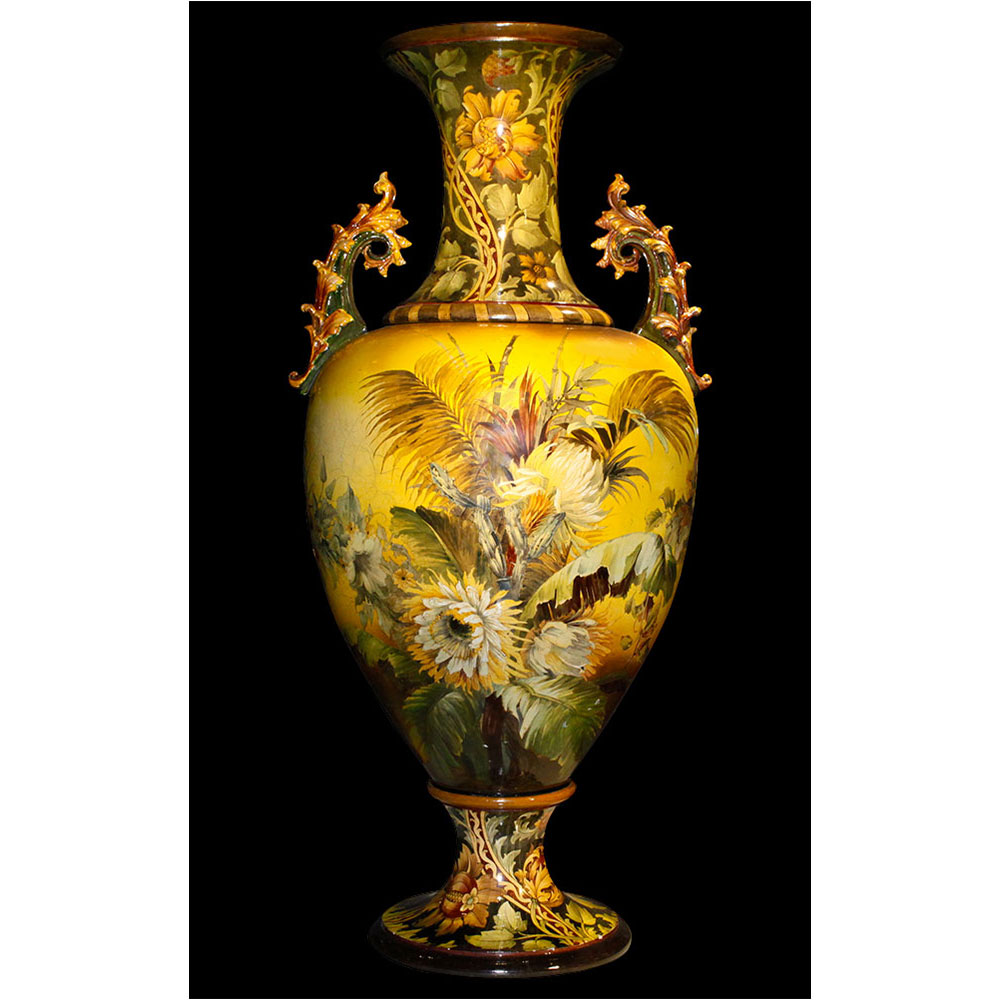
Doulton Lambeth Maharaja Vase by F. Lewis
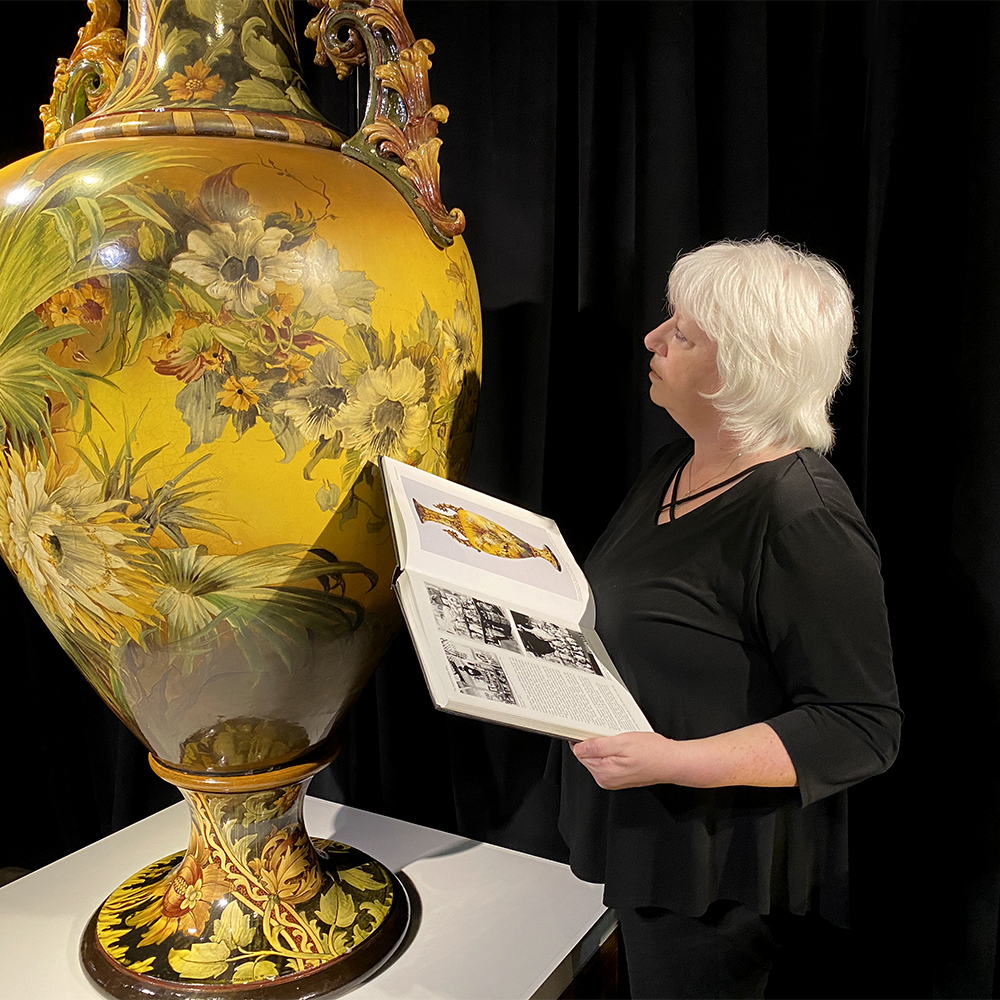
Louise Irvine with the Maharaja Vase at WMODA
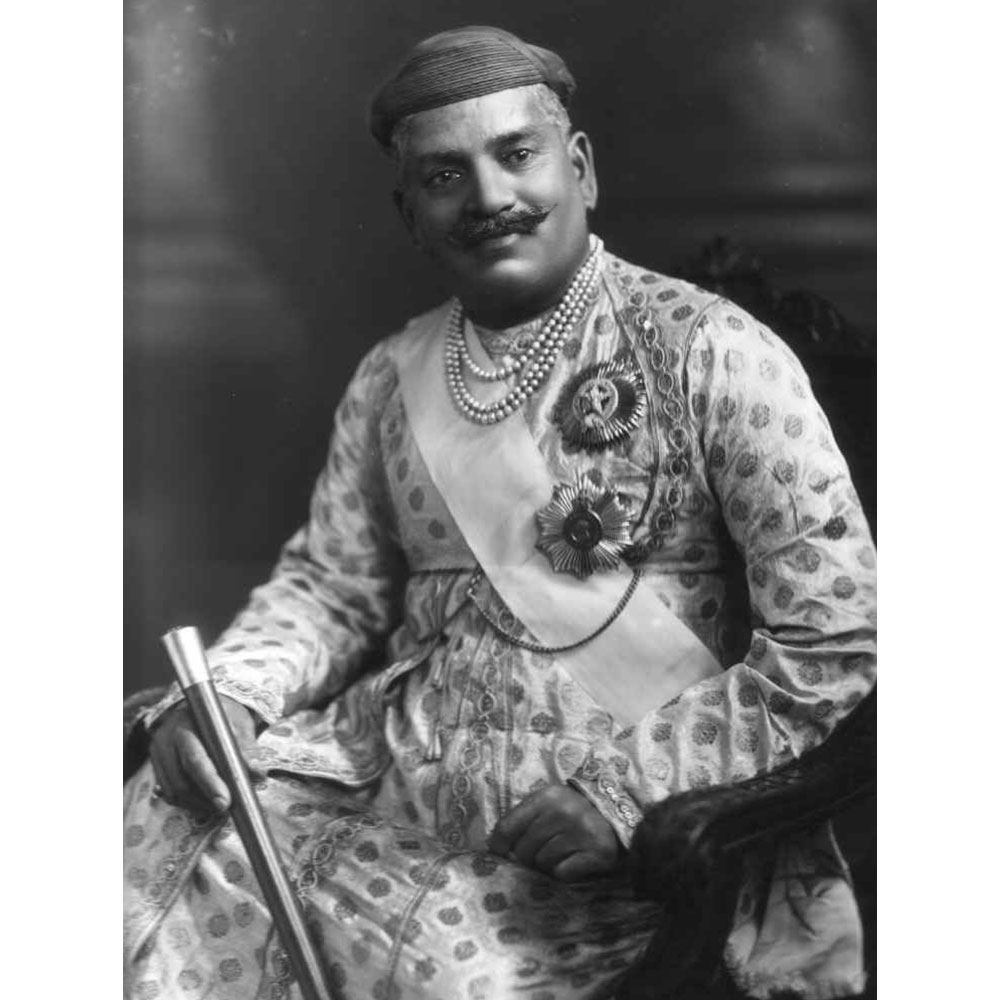
Sayajirao Gaekwad III, Maharaja of Baroda, 1919
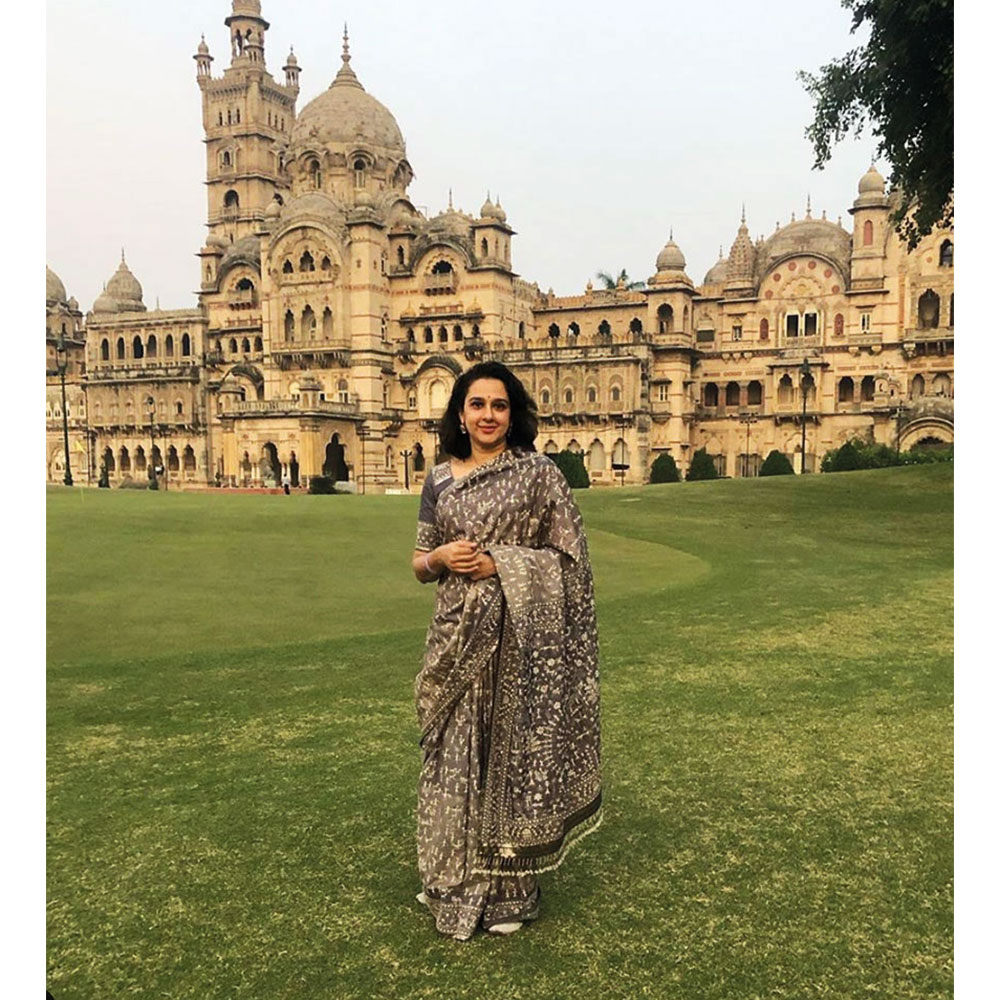
H. H. Radhikaraje Gaekwad at Lukshmi Vilas Palace
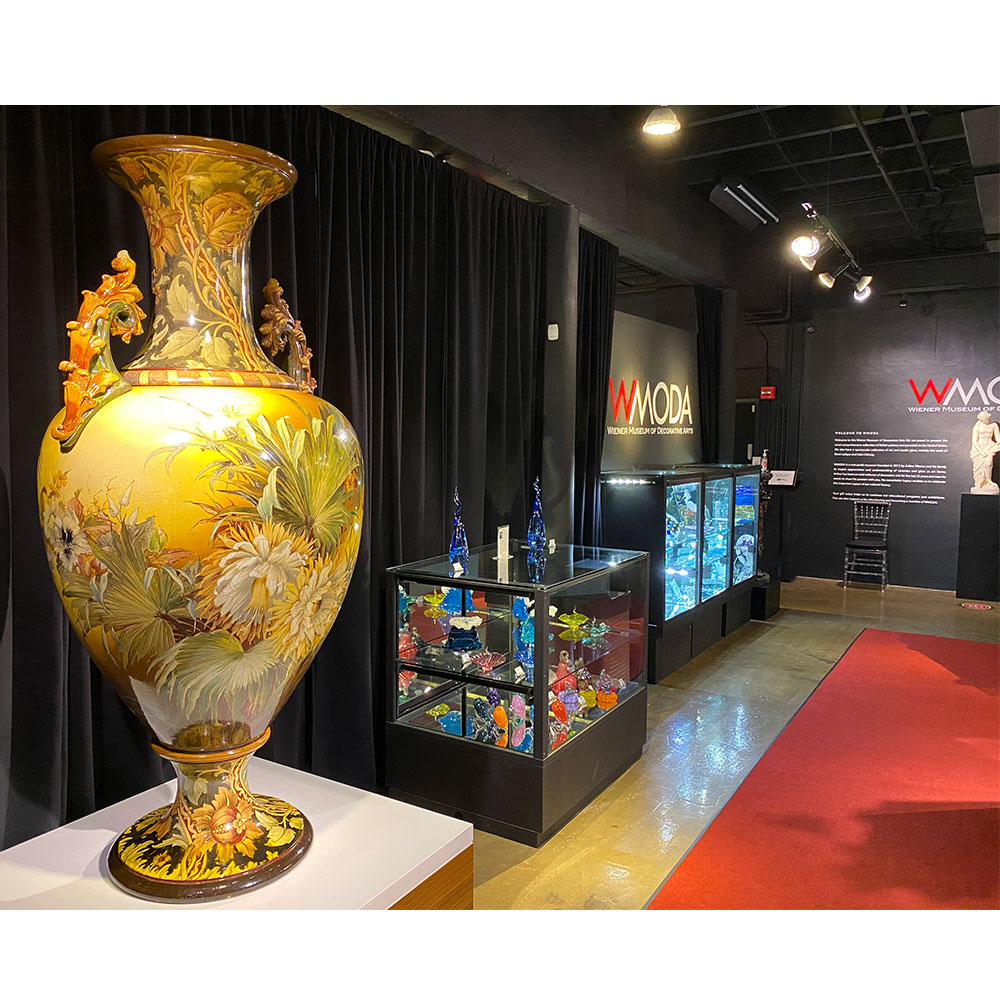
The Maharaja Vase at WMODA
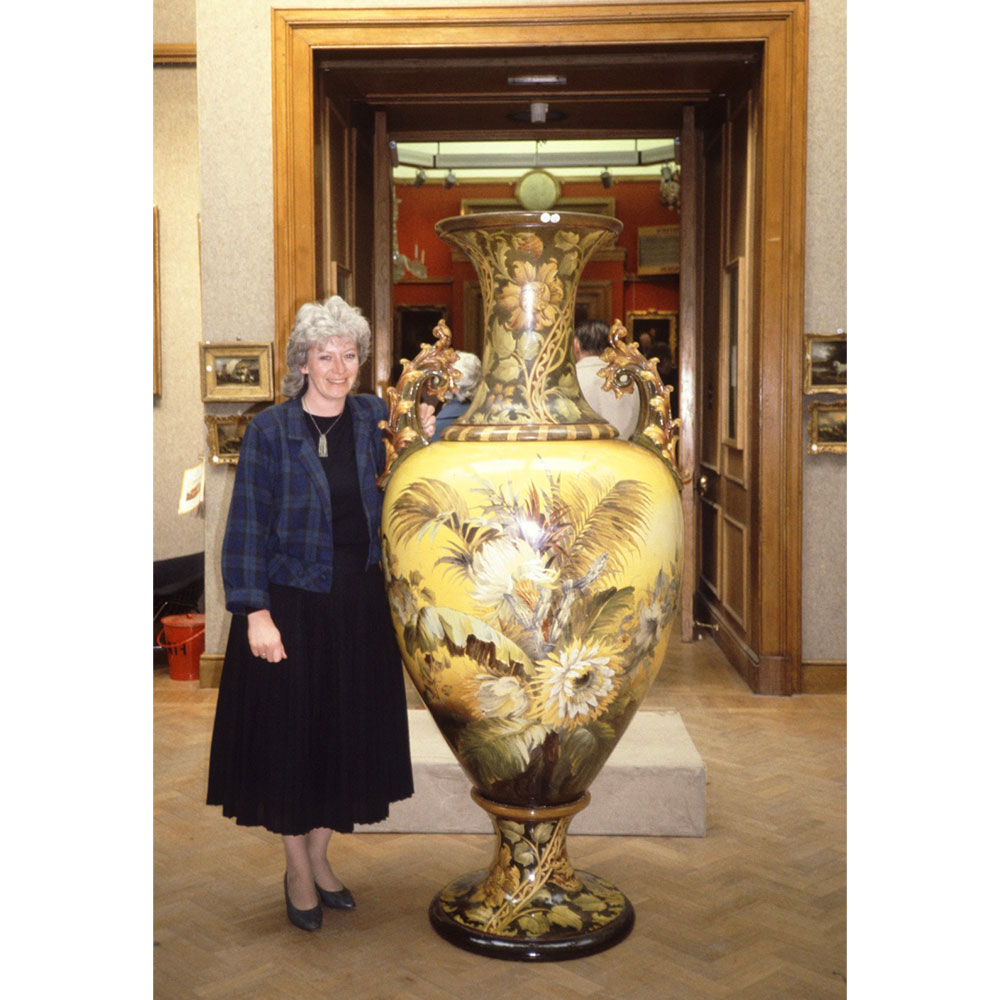
Louise with the Maharaja Vase at Christie's
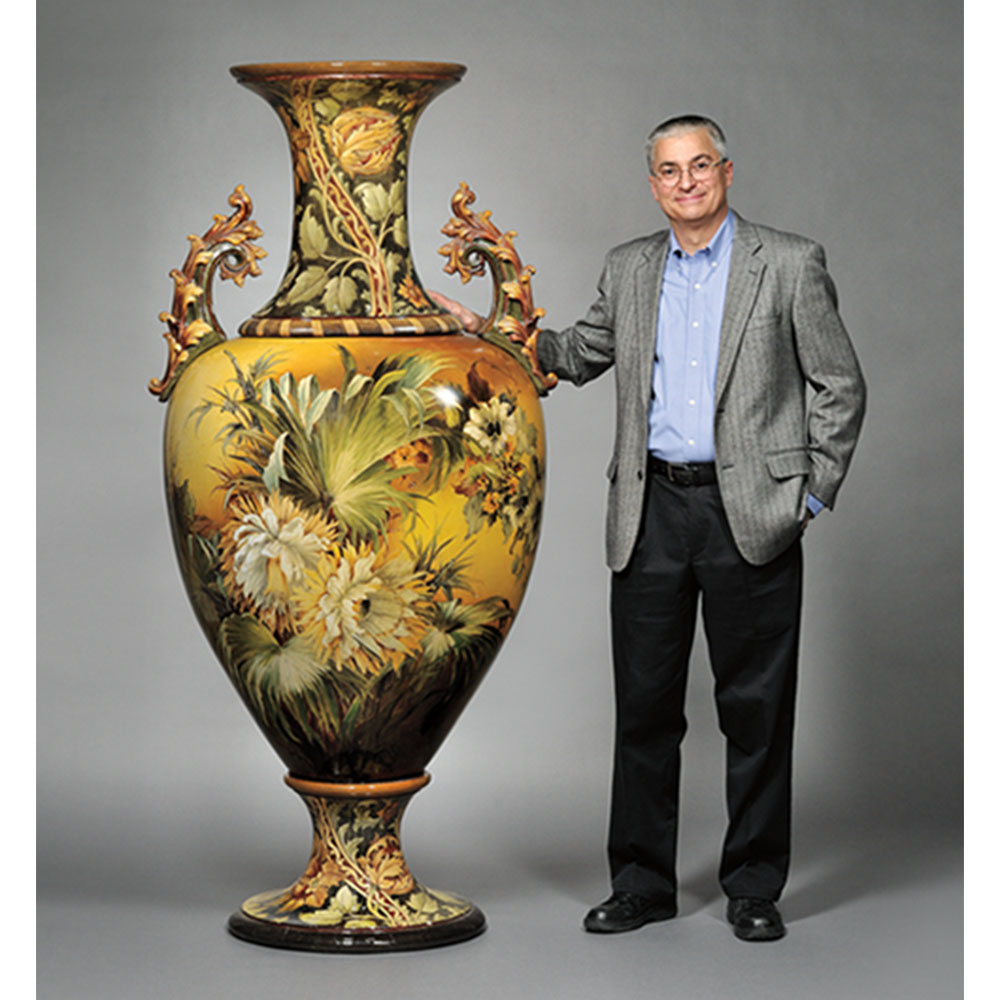
Stuart Slavid at Skinner’s
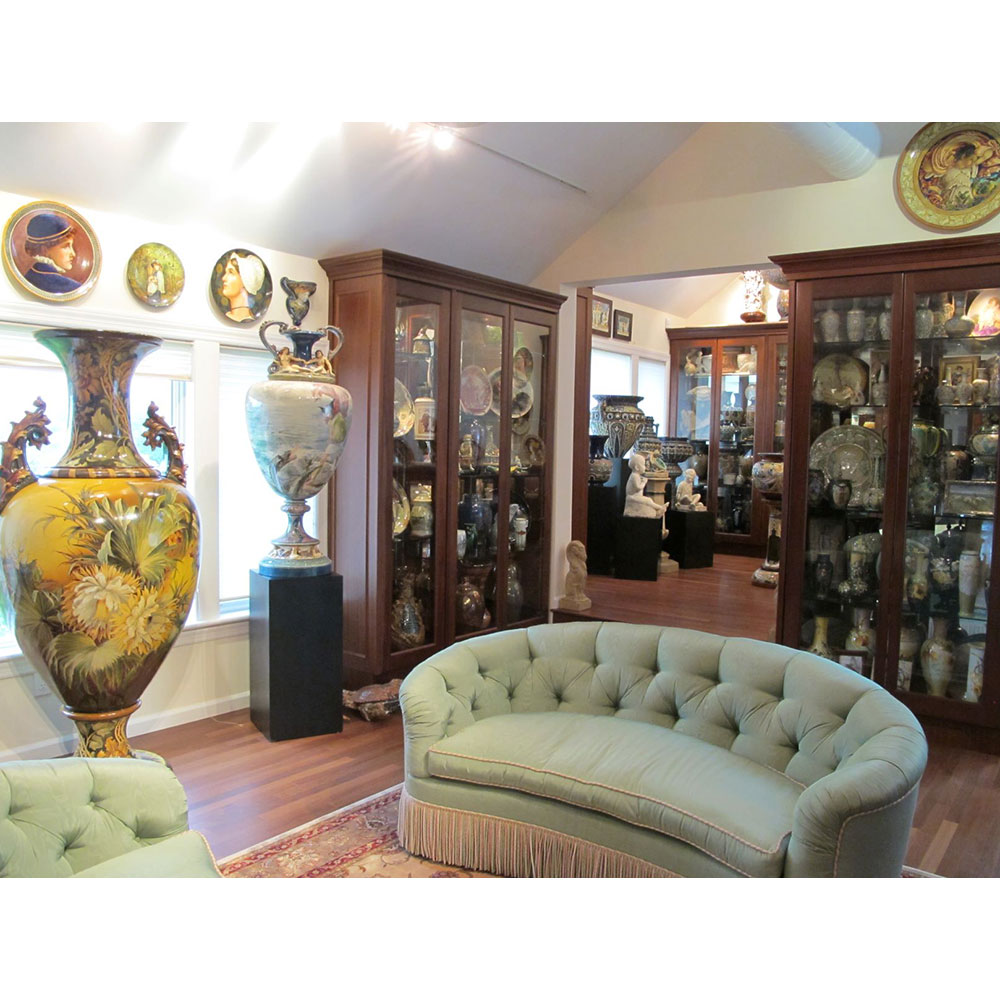
The Maharaja Vase at Arthur Wiener's Hamptons House
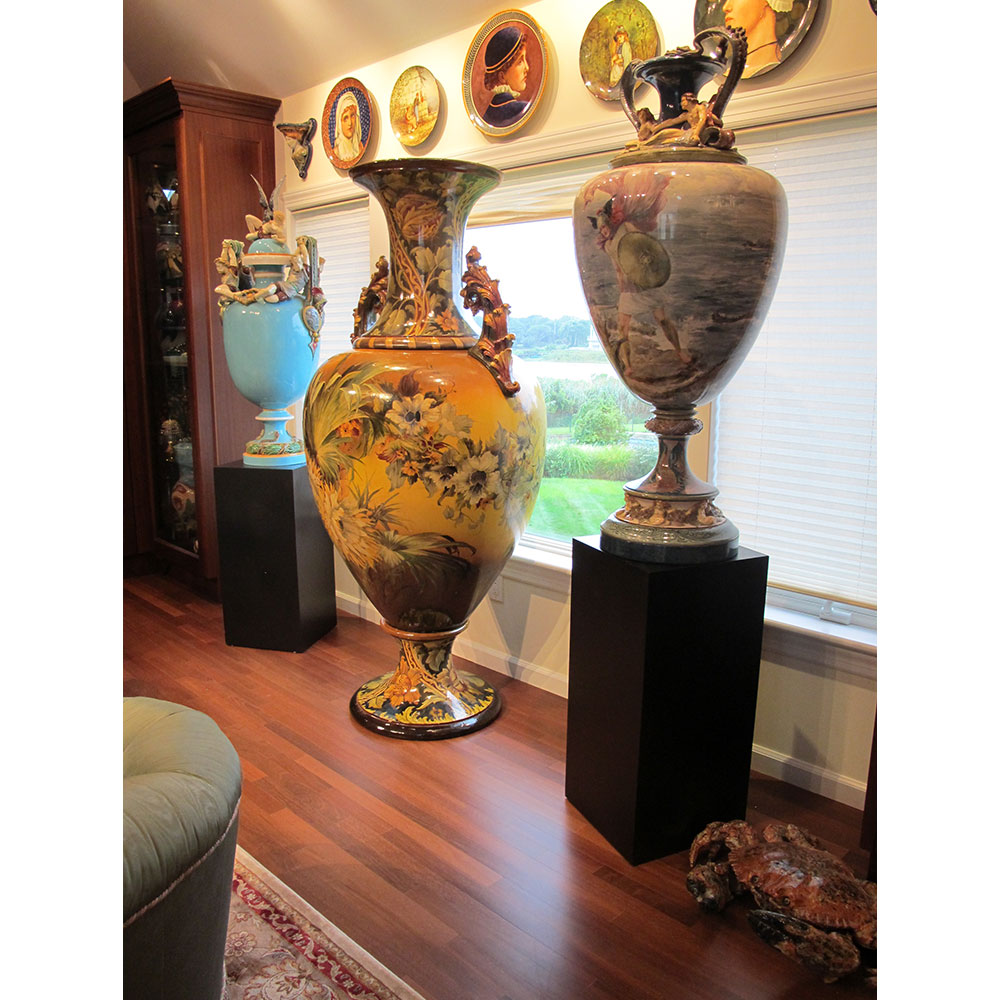
The Maharaja Vase at Arthur Wiener's Hamptons House
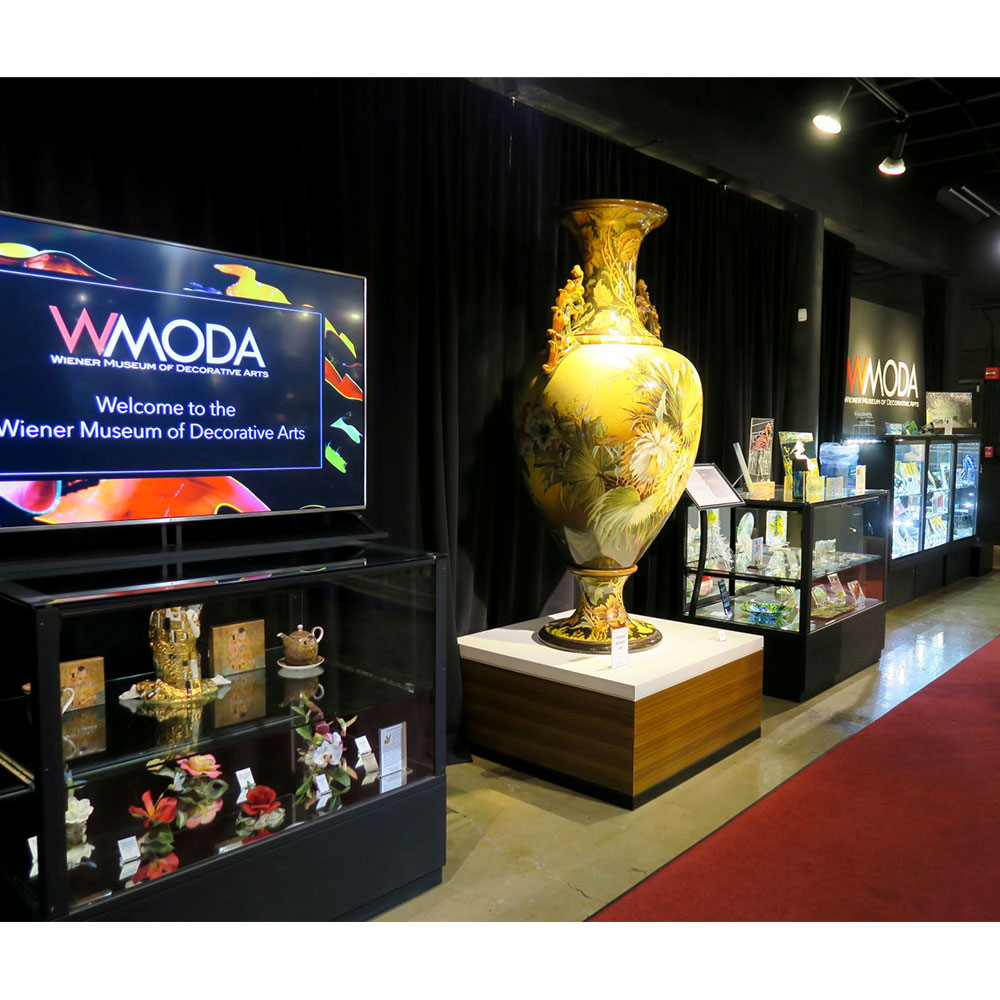
The Maharaja Vase at WMODA
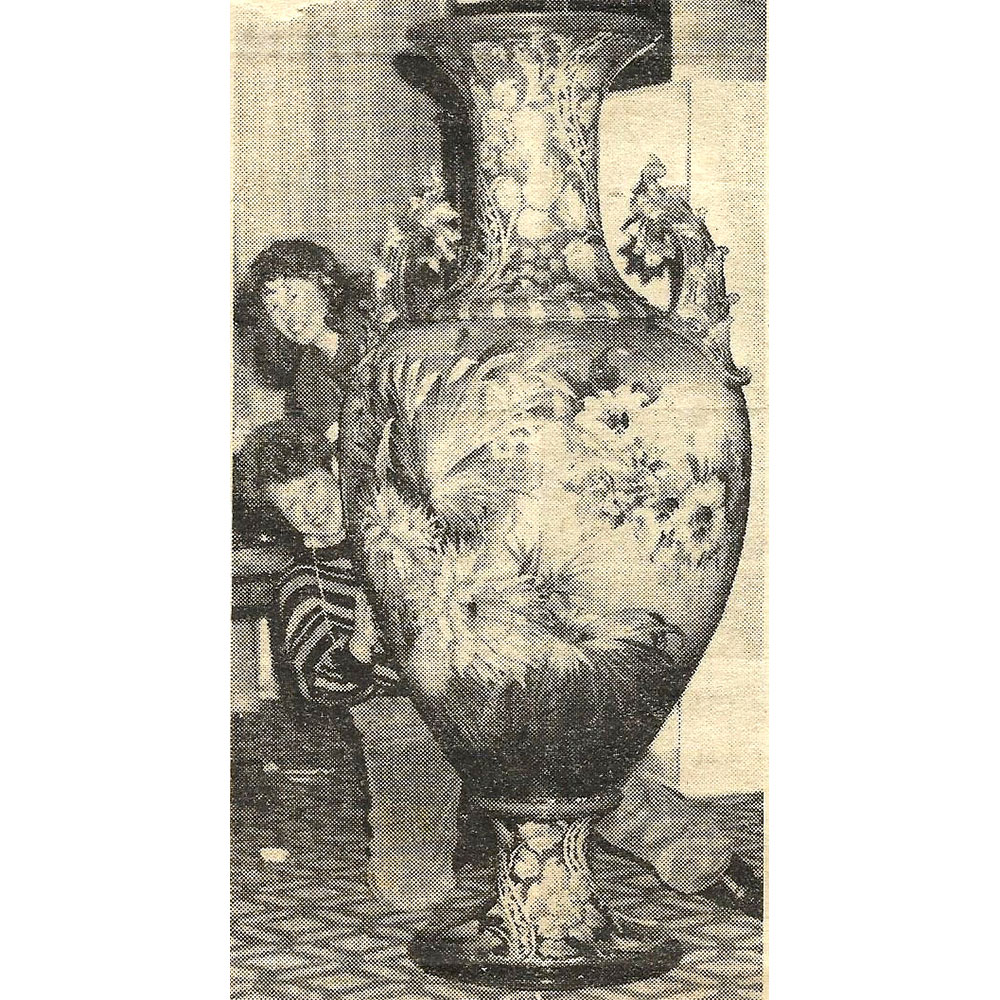
Press photo of the Maharaja Vase’s rediscovery in England
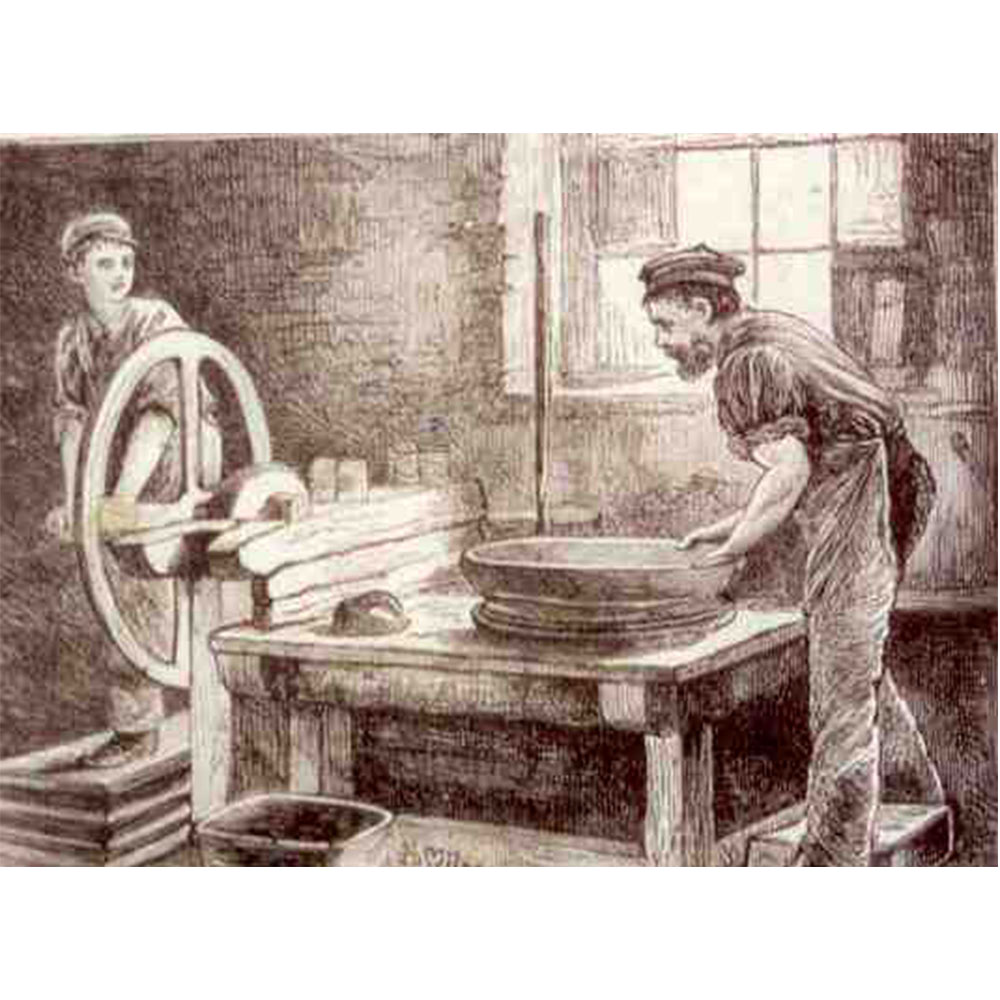
Throwing by H. Miles
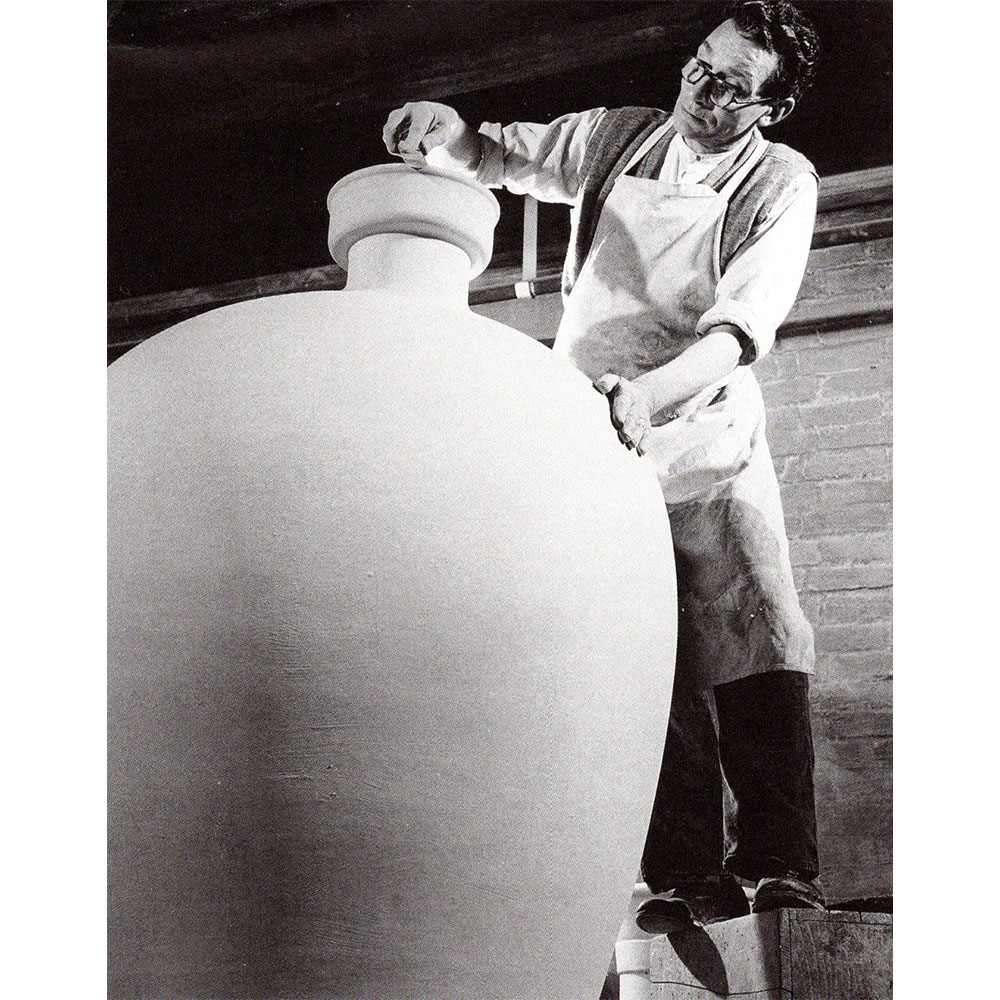
Finishing a gigantic pot
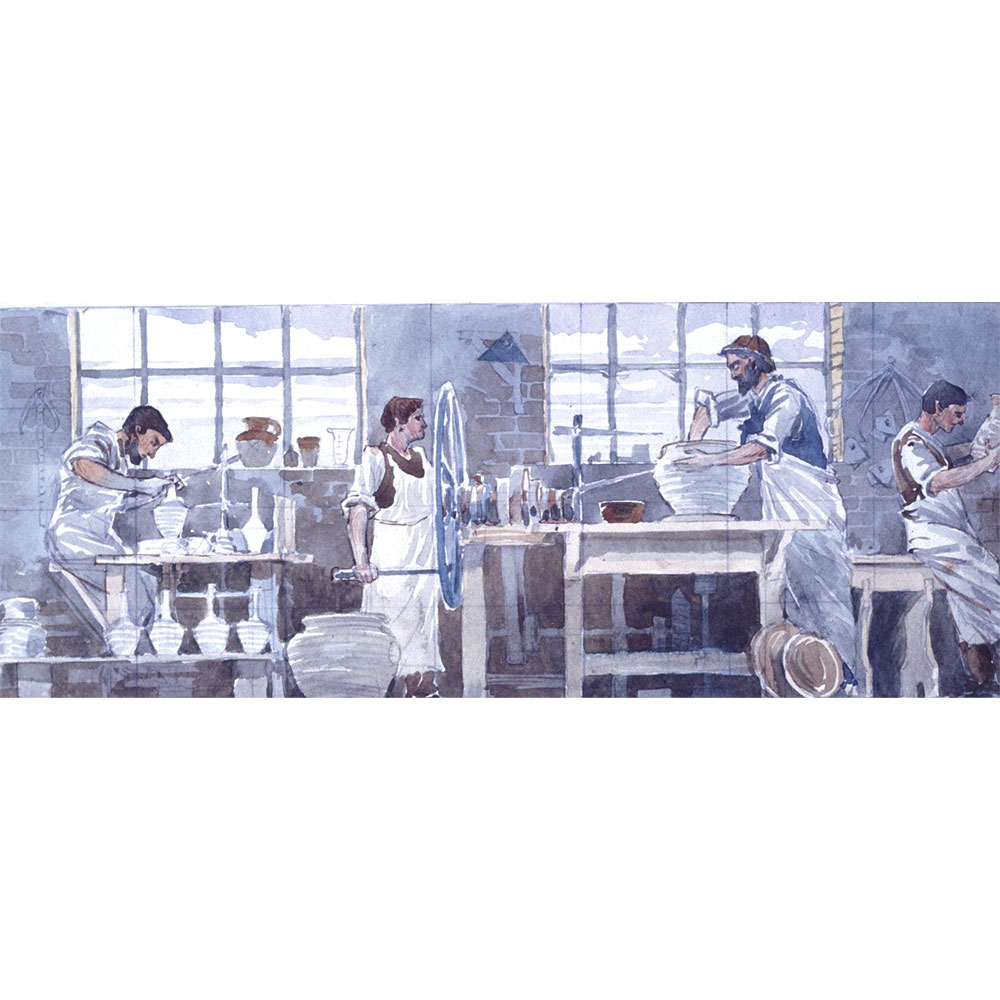
Throwers at Work by W. Rowe
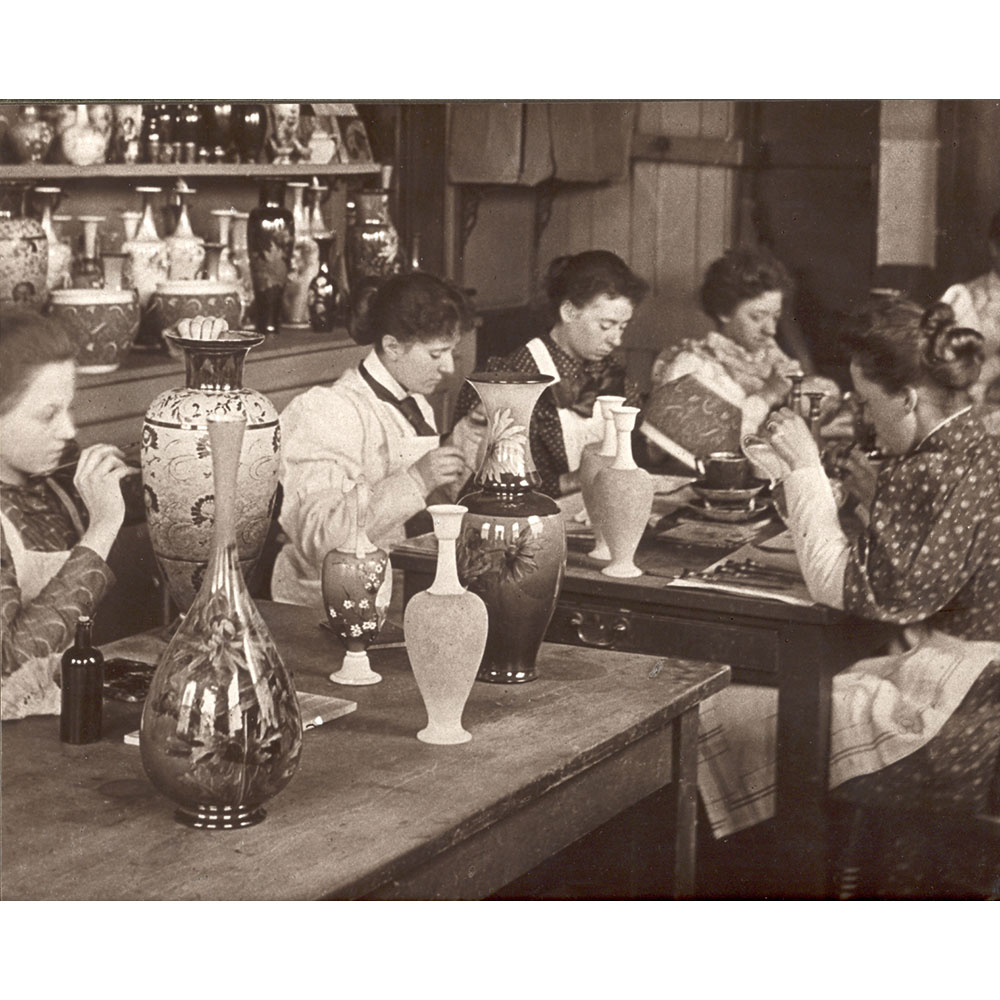
Doulton Studio Artists
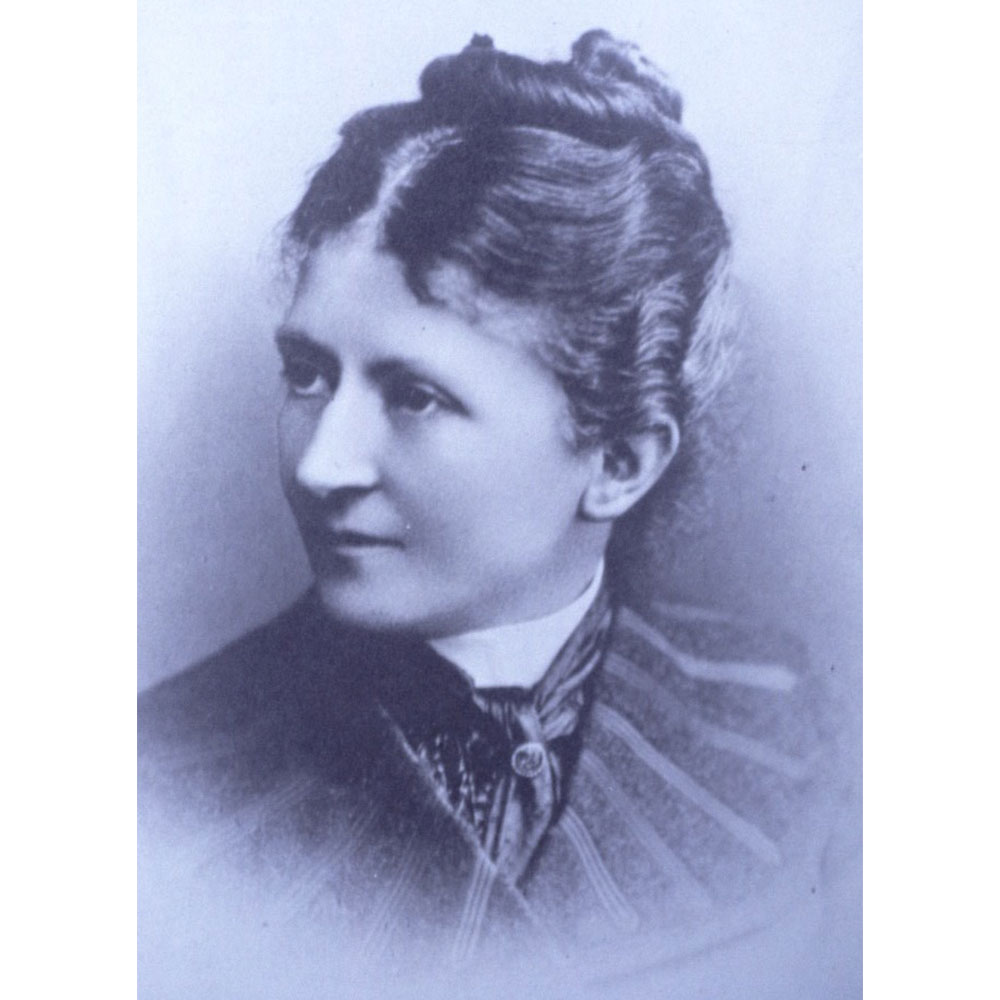
Florence Lewis
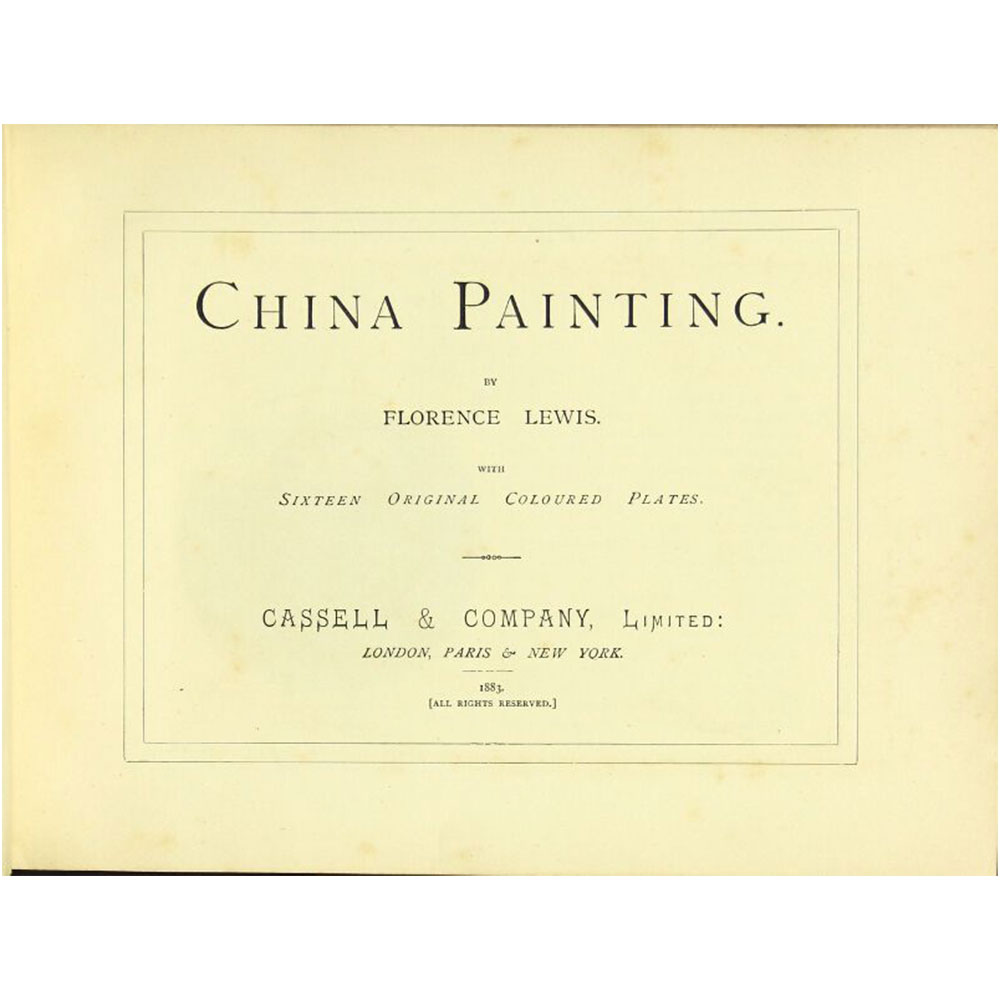
China Painting Book by F. Lewis
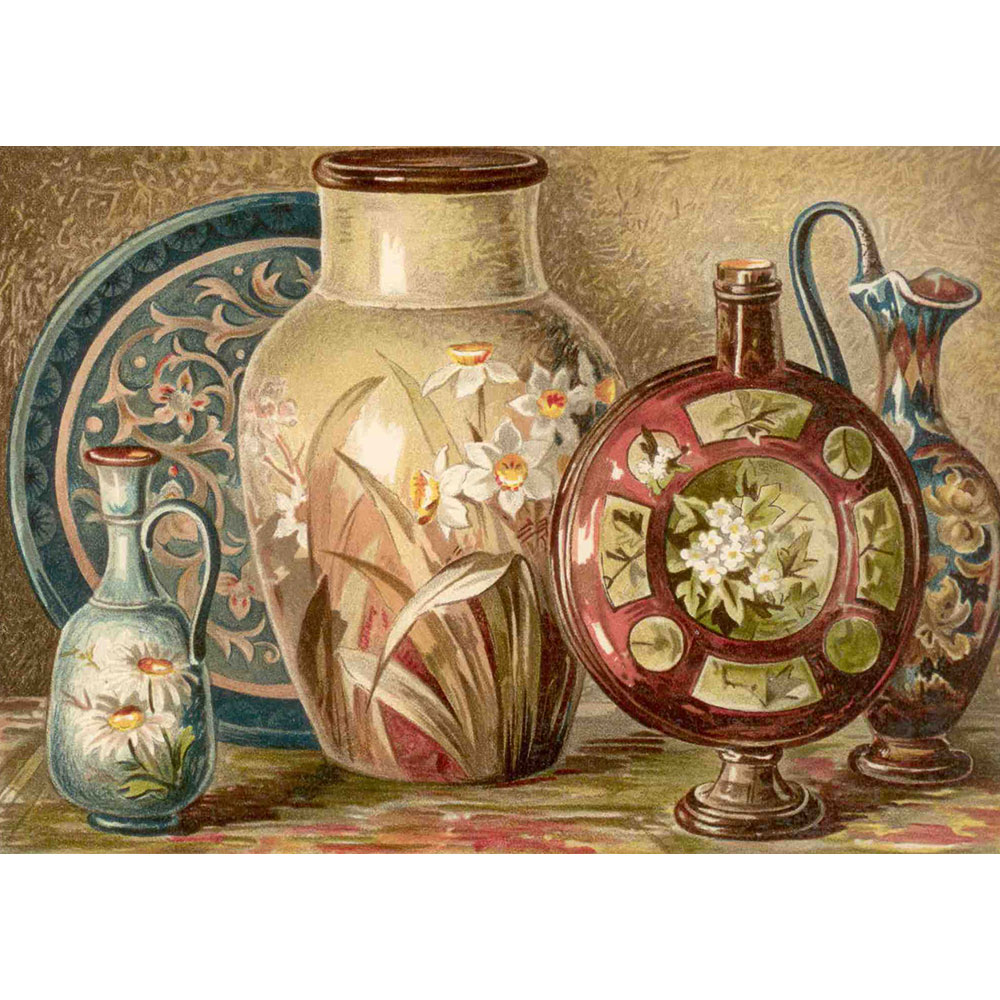
China Painting Book by F. Lewis
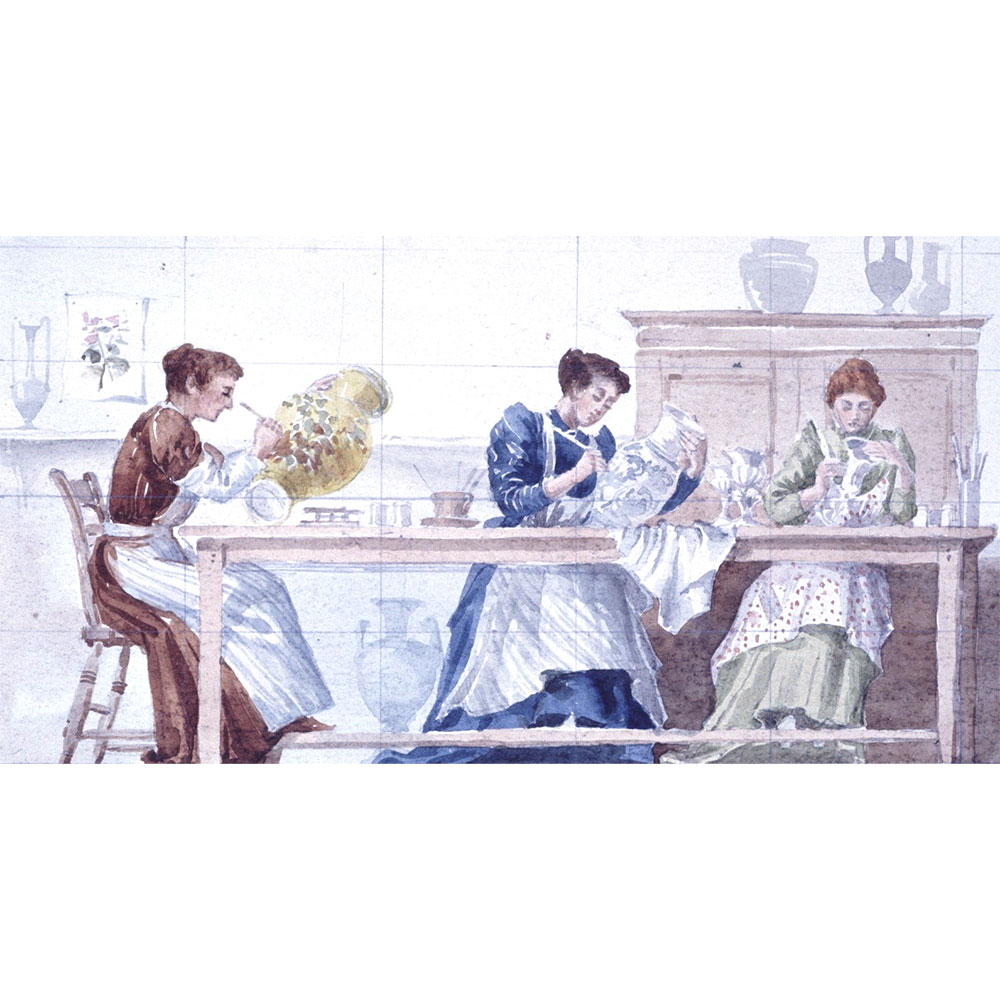
Doulton Artists at work by W. Rowe
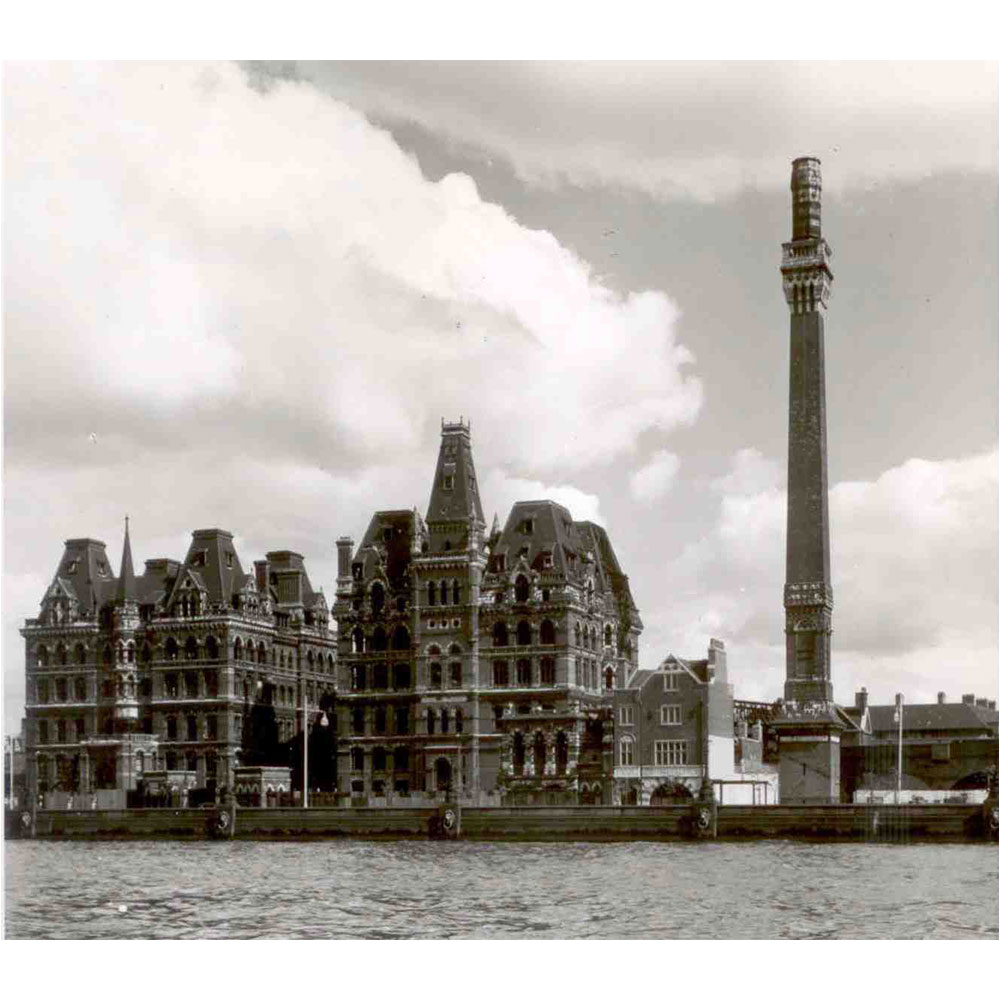
Doulton Lambeth Factory
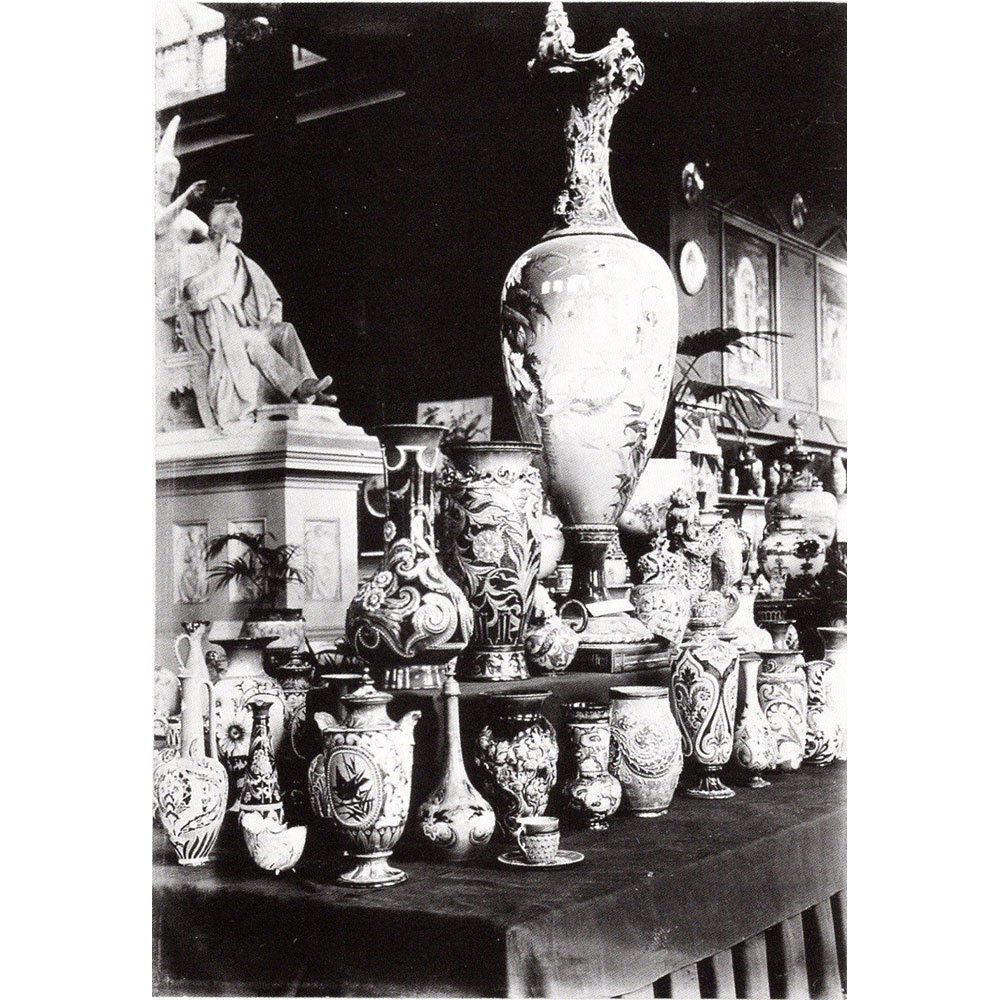
Doulton Lambeth Showroom
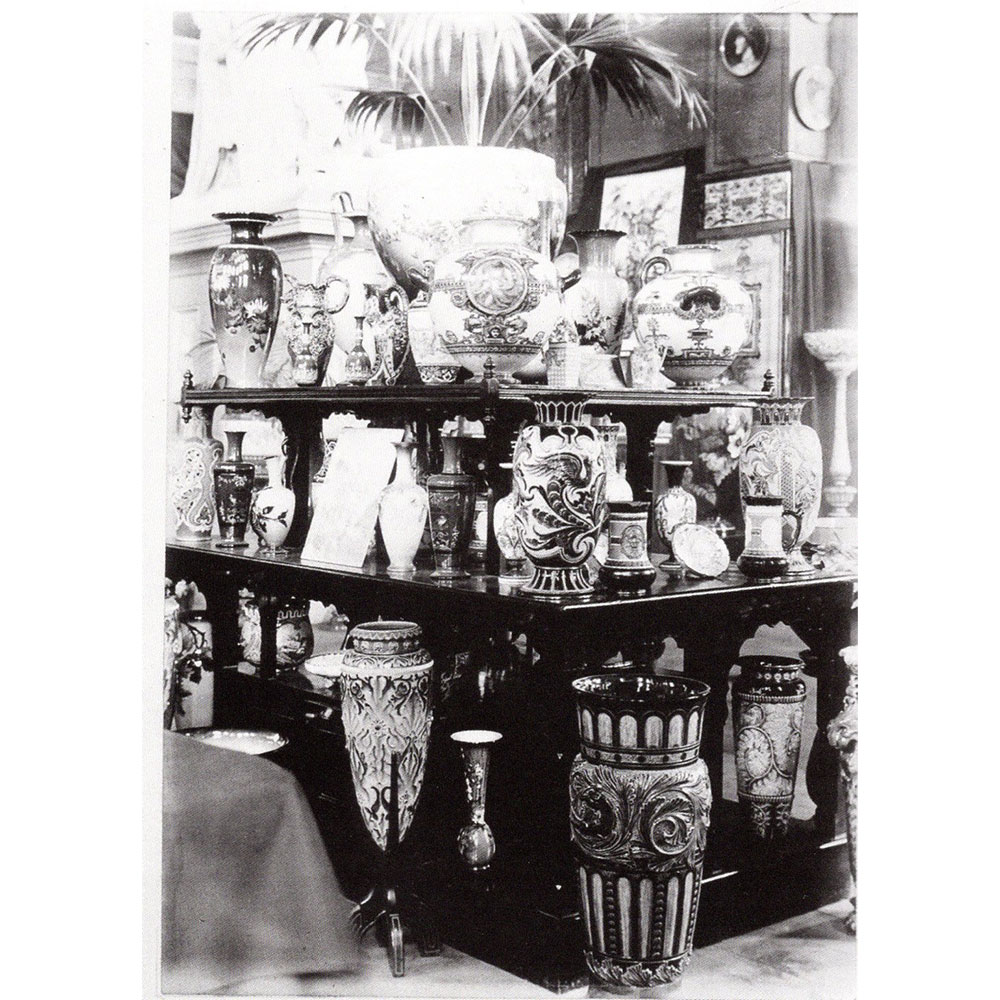
Doulton Lambeth Showroom
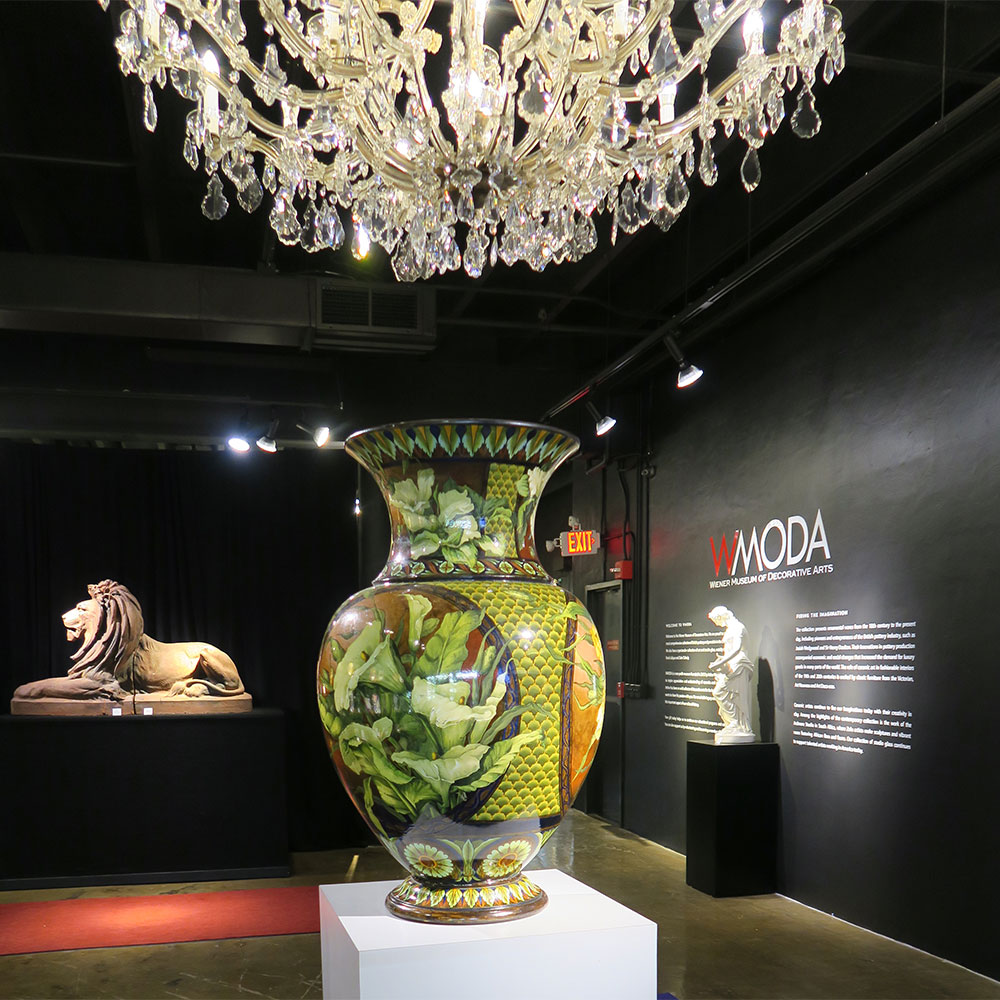
Doulton Lambeth Exhibition Vase by F. Lewis
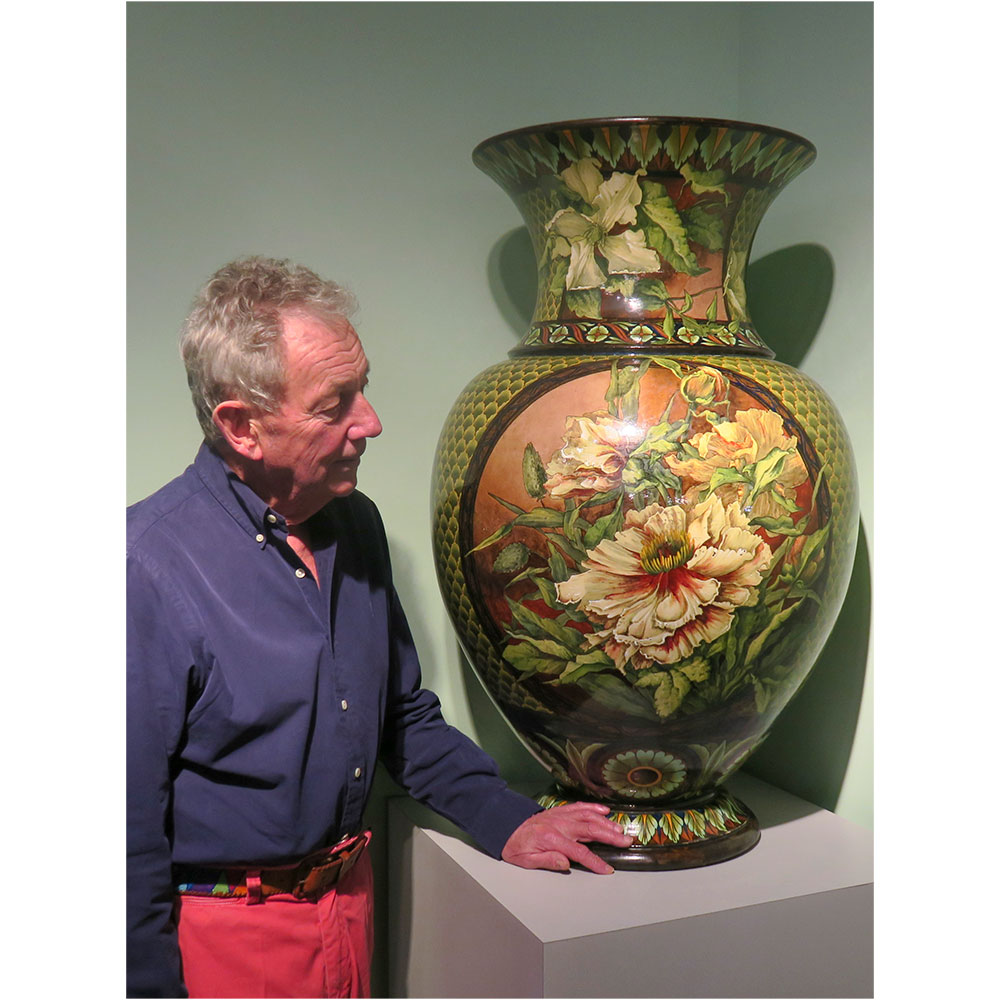
Michael Doulton with an Exhibition Vase by Florence Lewis
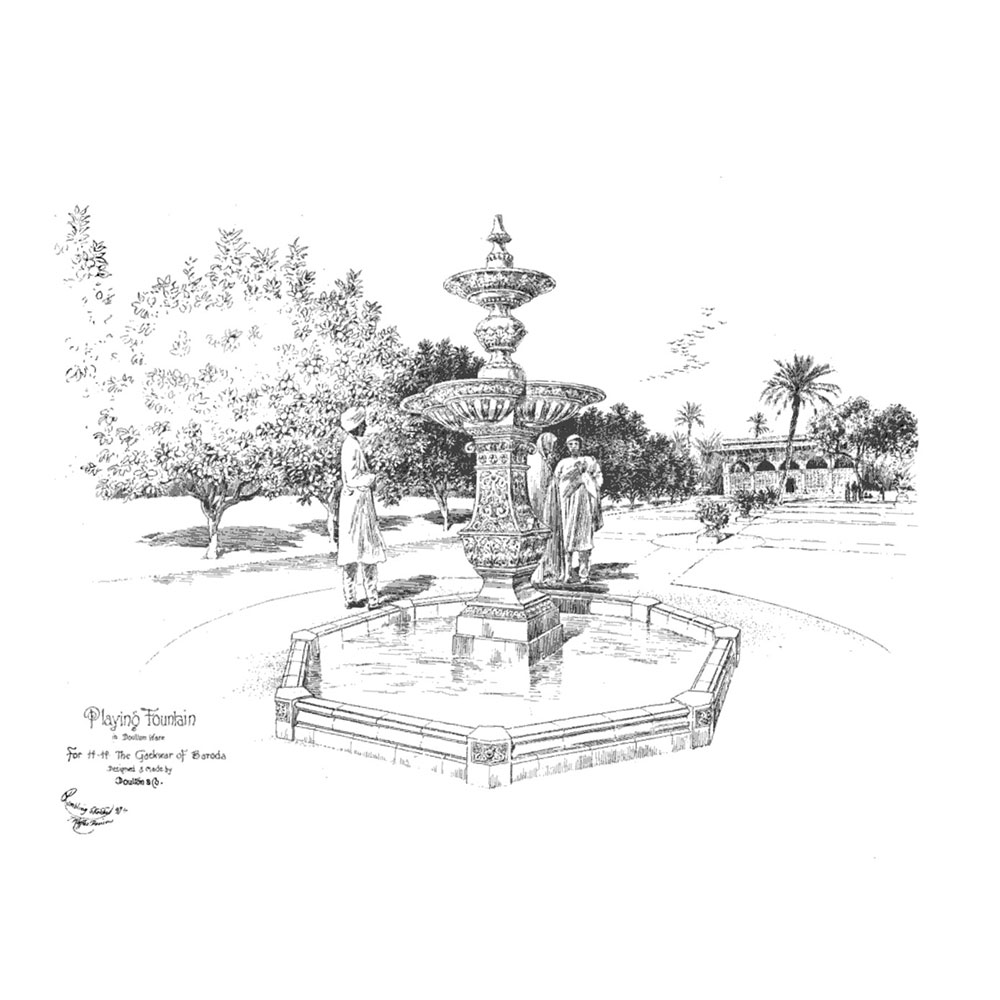
Doulton Lambeth Fountain Commissioned by the Maharaja
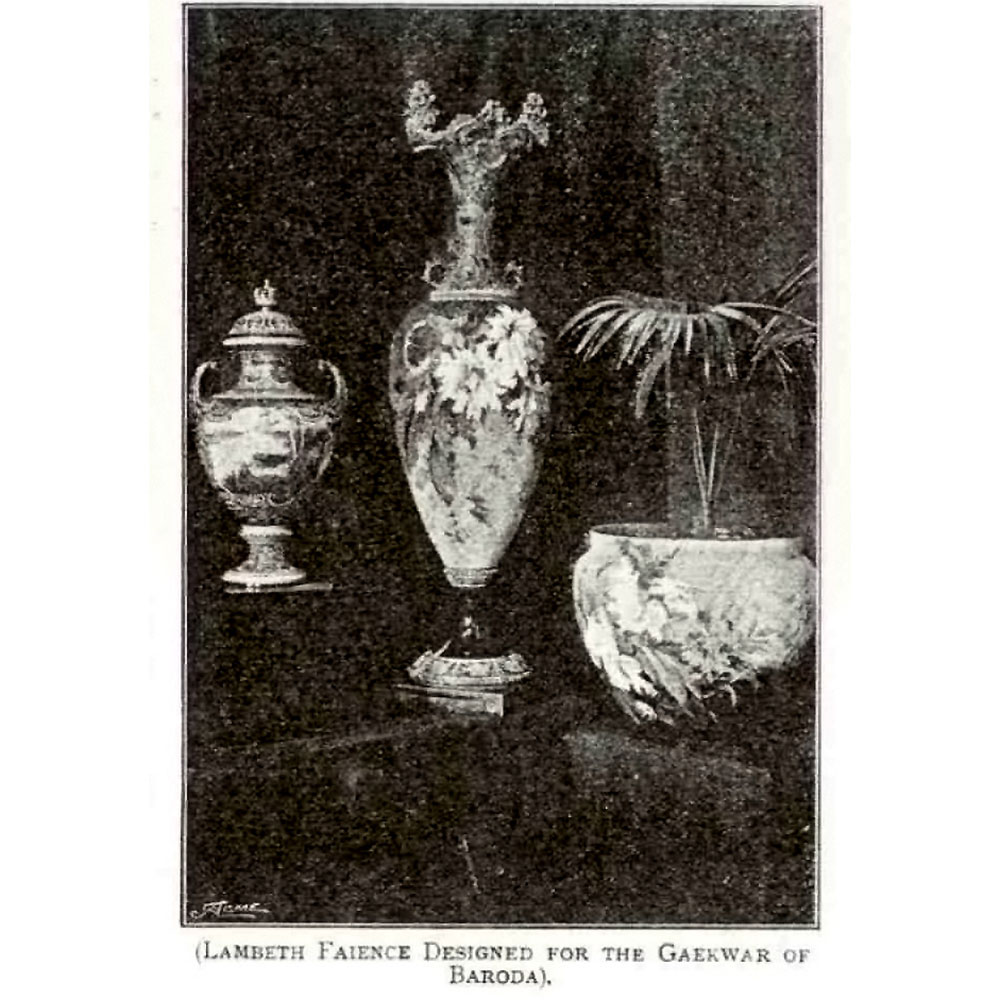
The Maharaja's selections in the St. James Budget
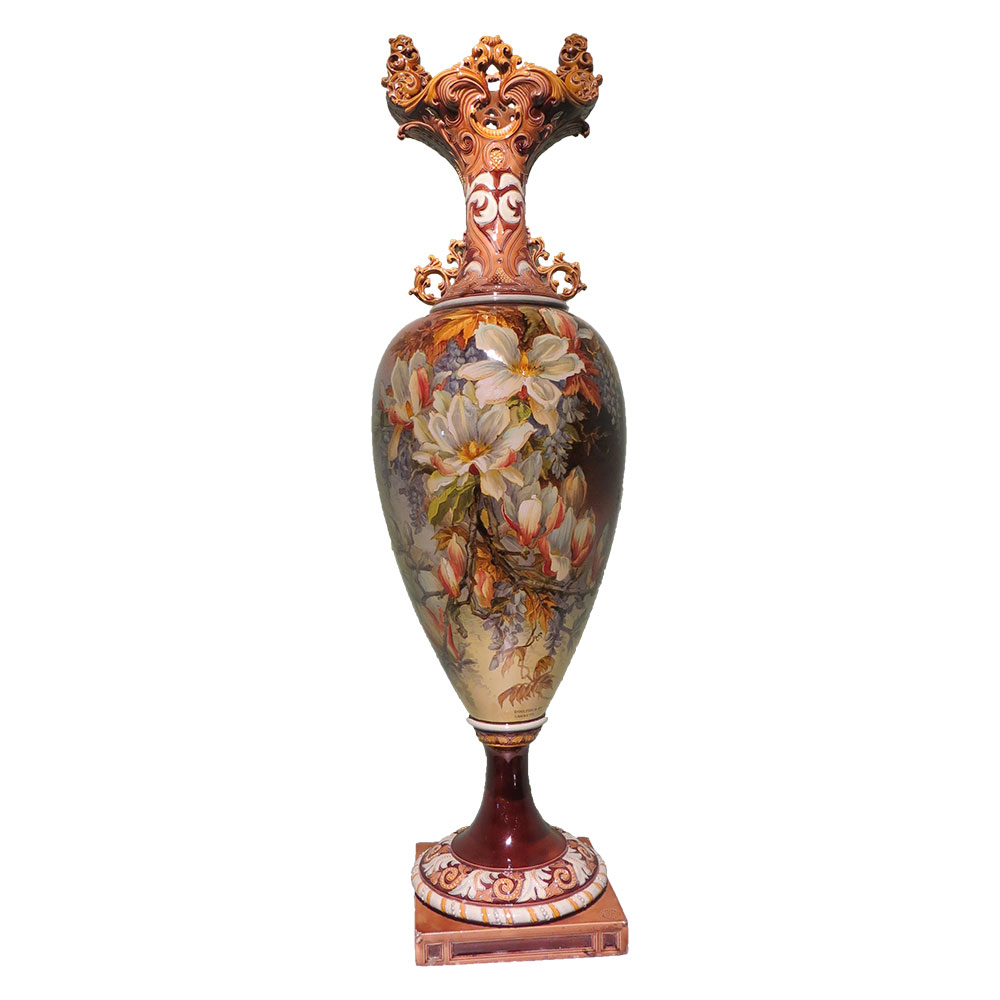
Doulton Lambeth Faience Vase by M. V. Marshall & F. Lewis
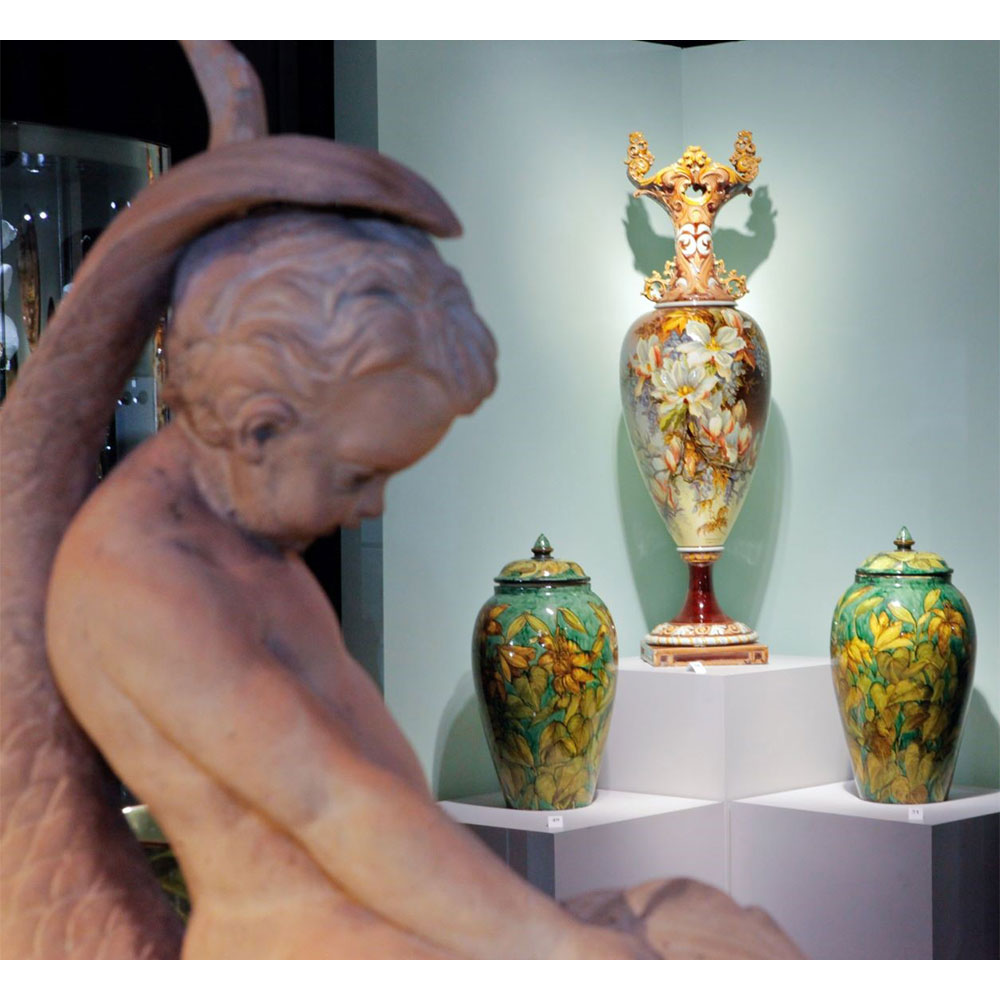
Doulton Lambeth Faience Exhibition Vase at WMODA
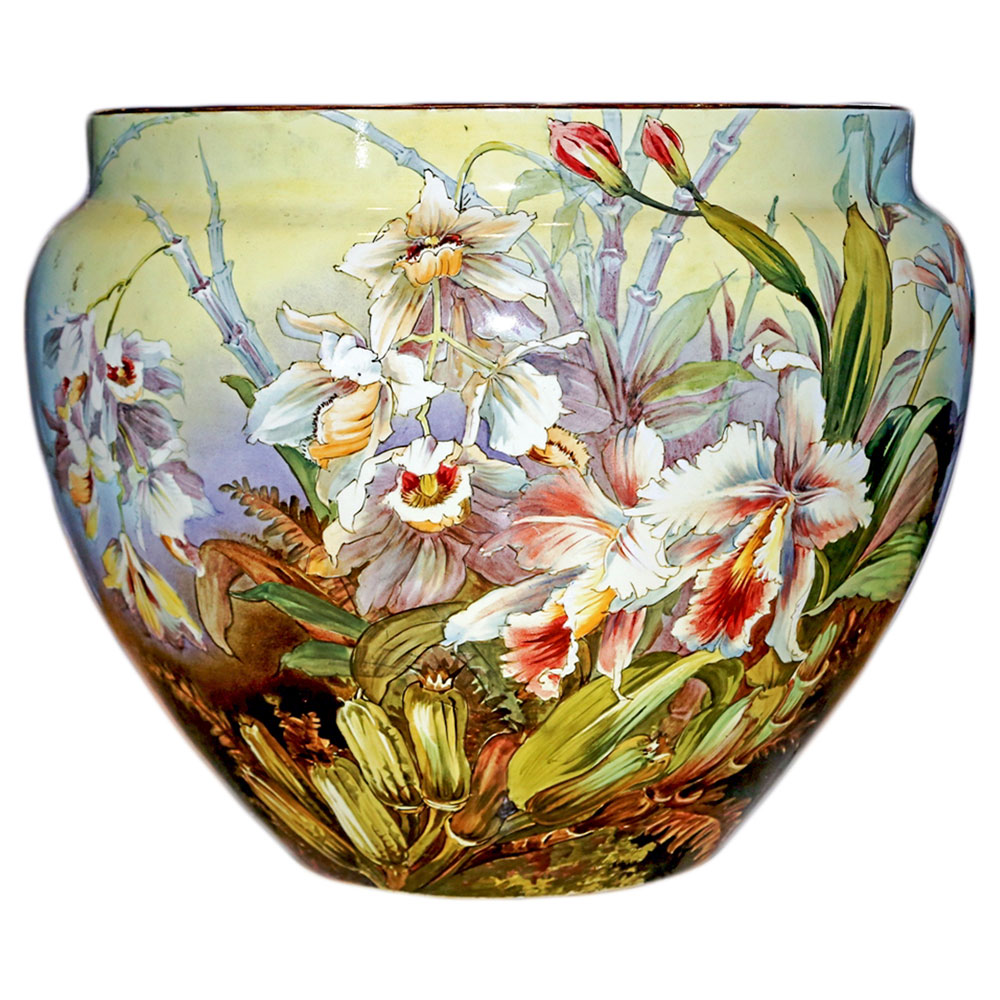
Doulton Lambeth Faience Planter by F. Lewis
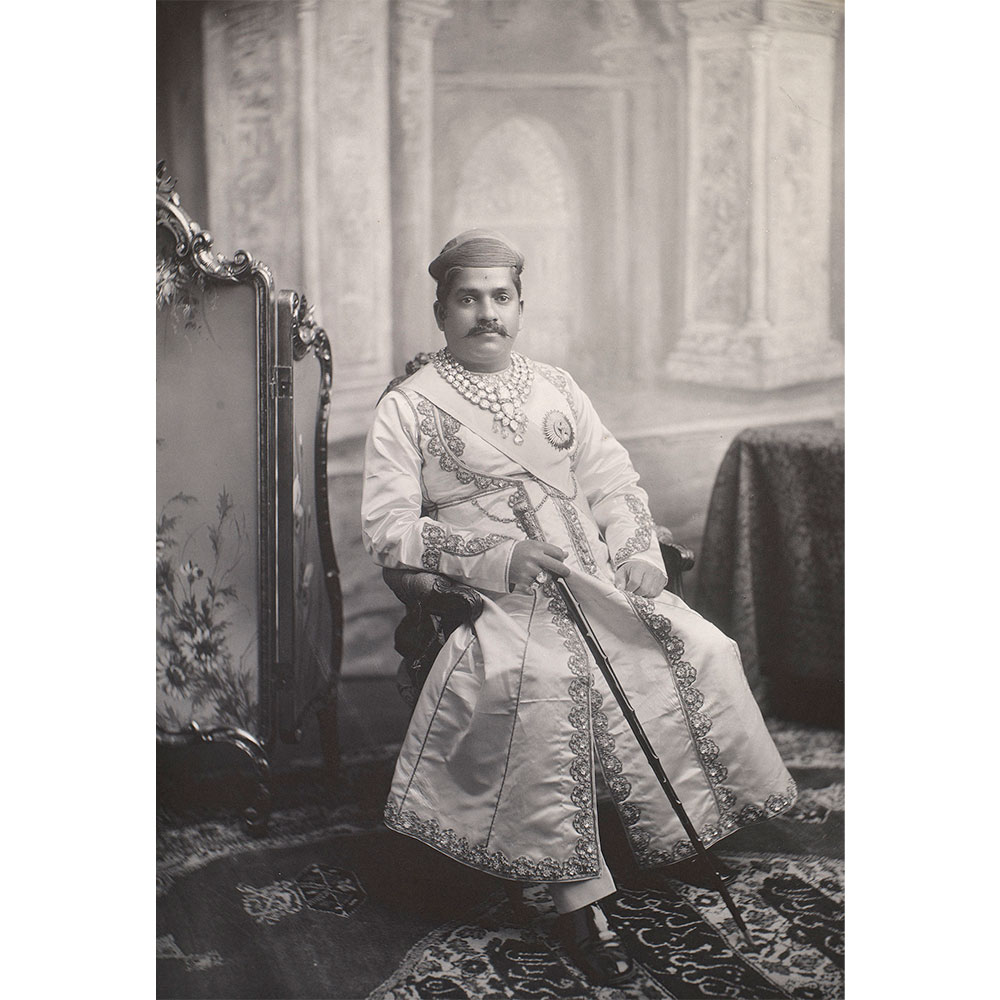
Sayajirao Gaekwad III, Maharaja of Baroda, 1903
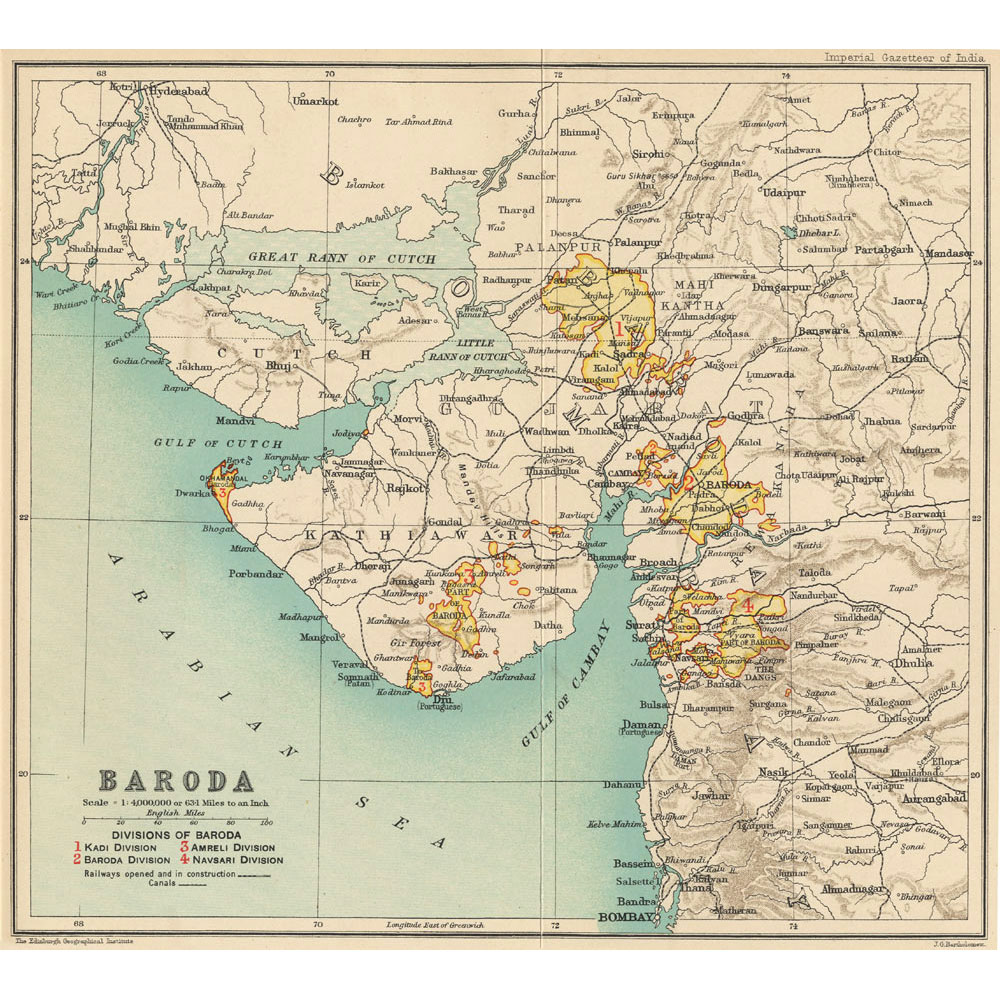
Map of Baroda
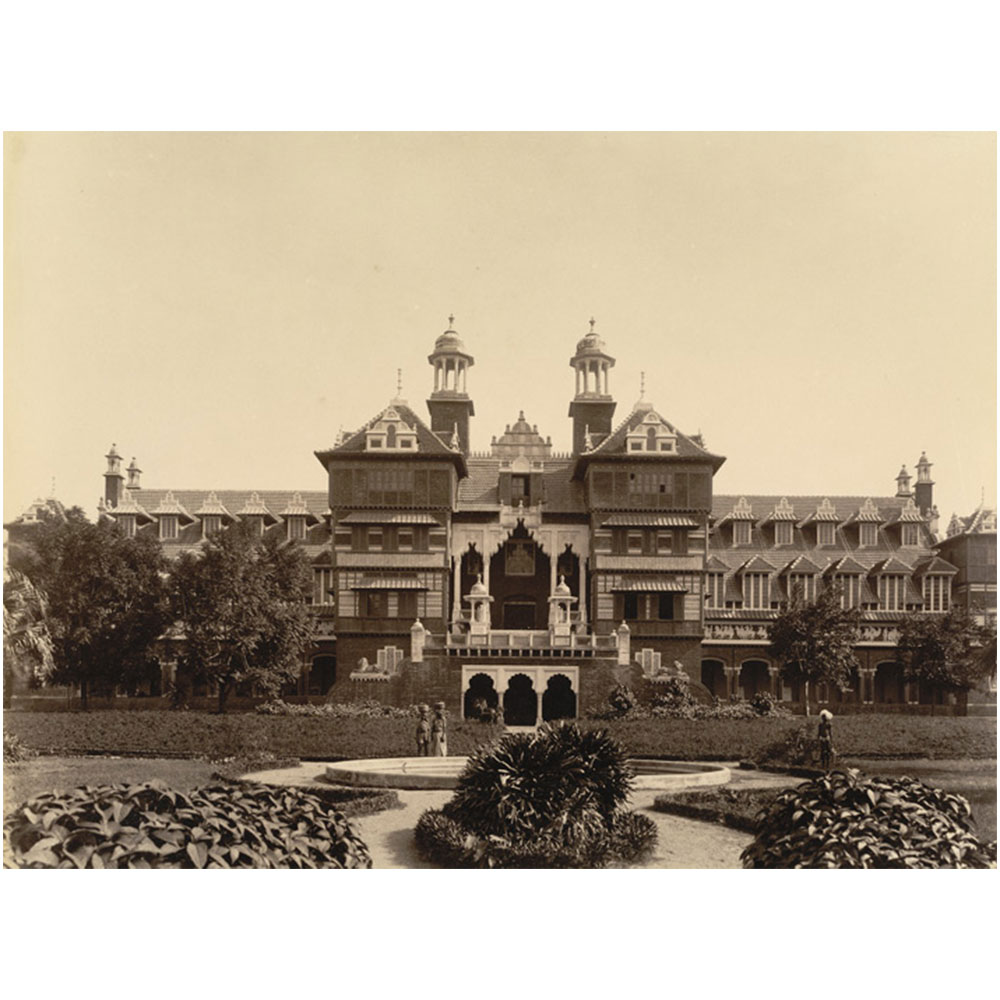
Baroda Museum
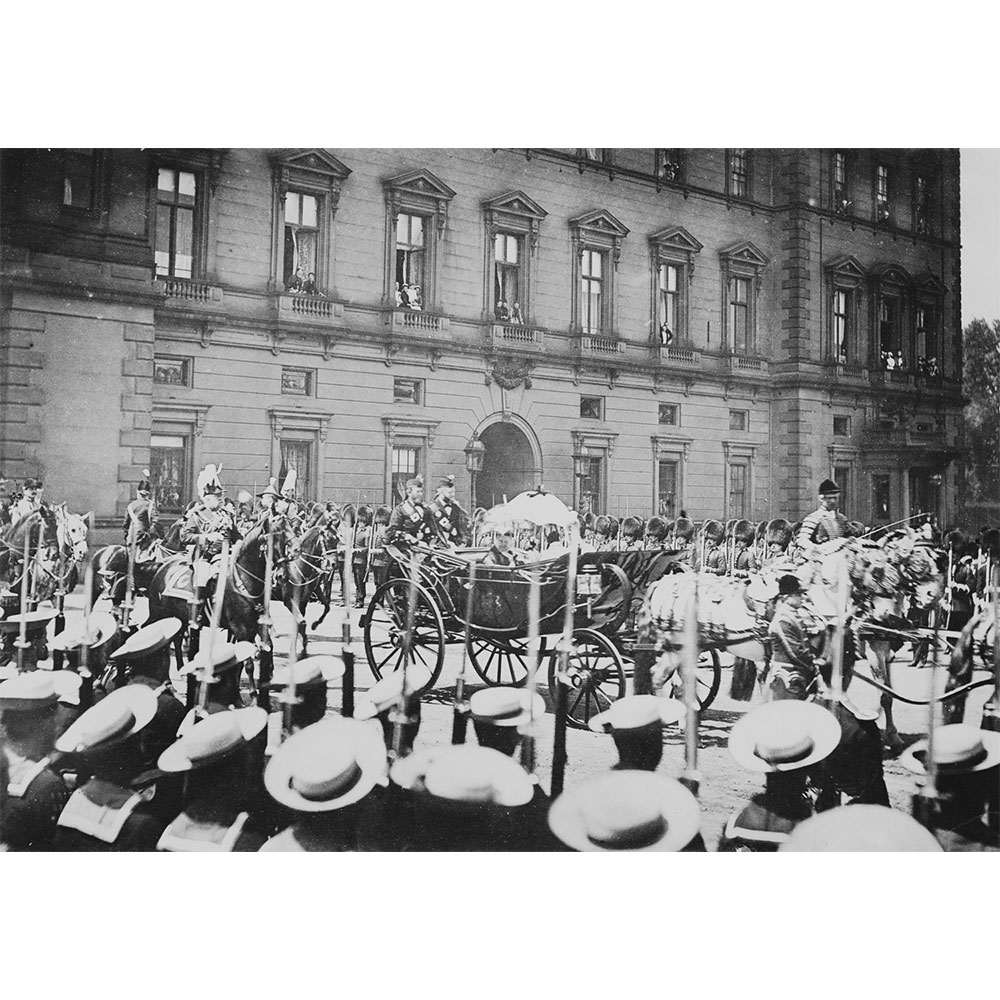
Queen Victoria in her carriage
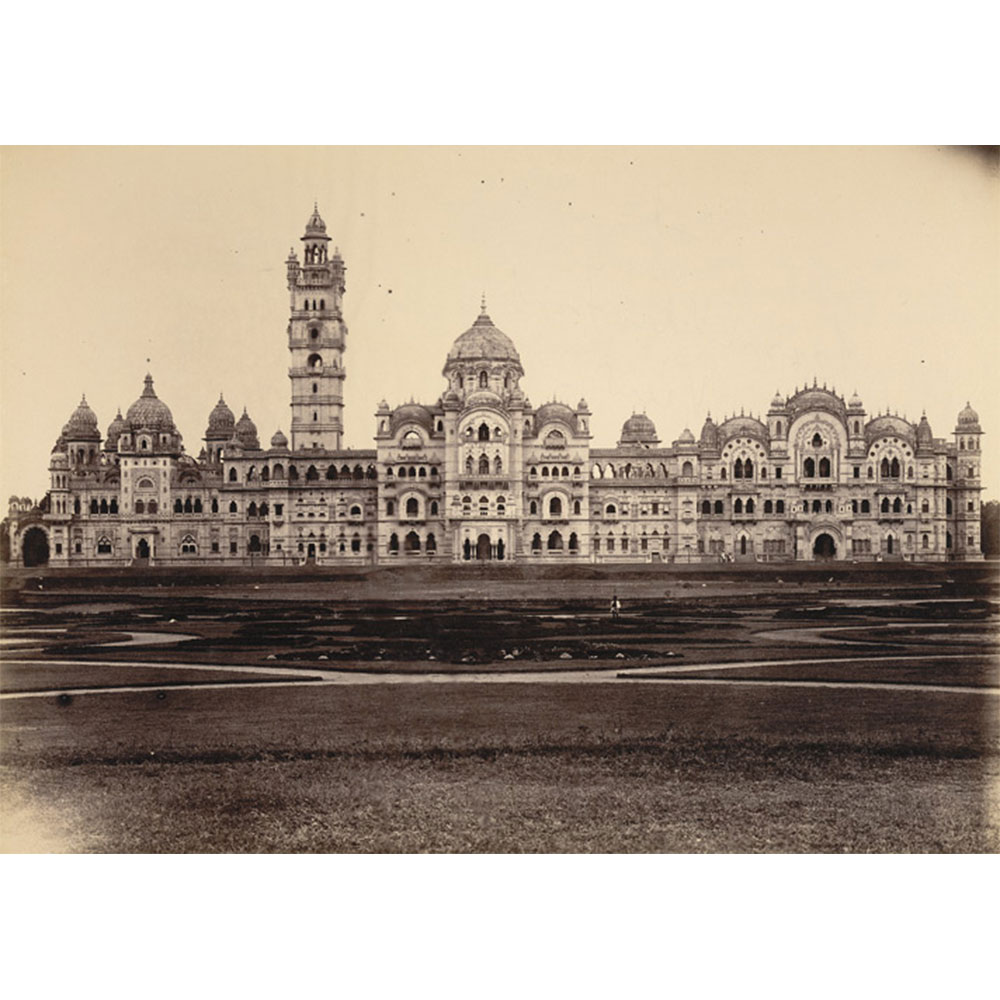
Lukshmi Vilas Palace, 1890
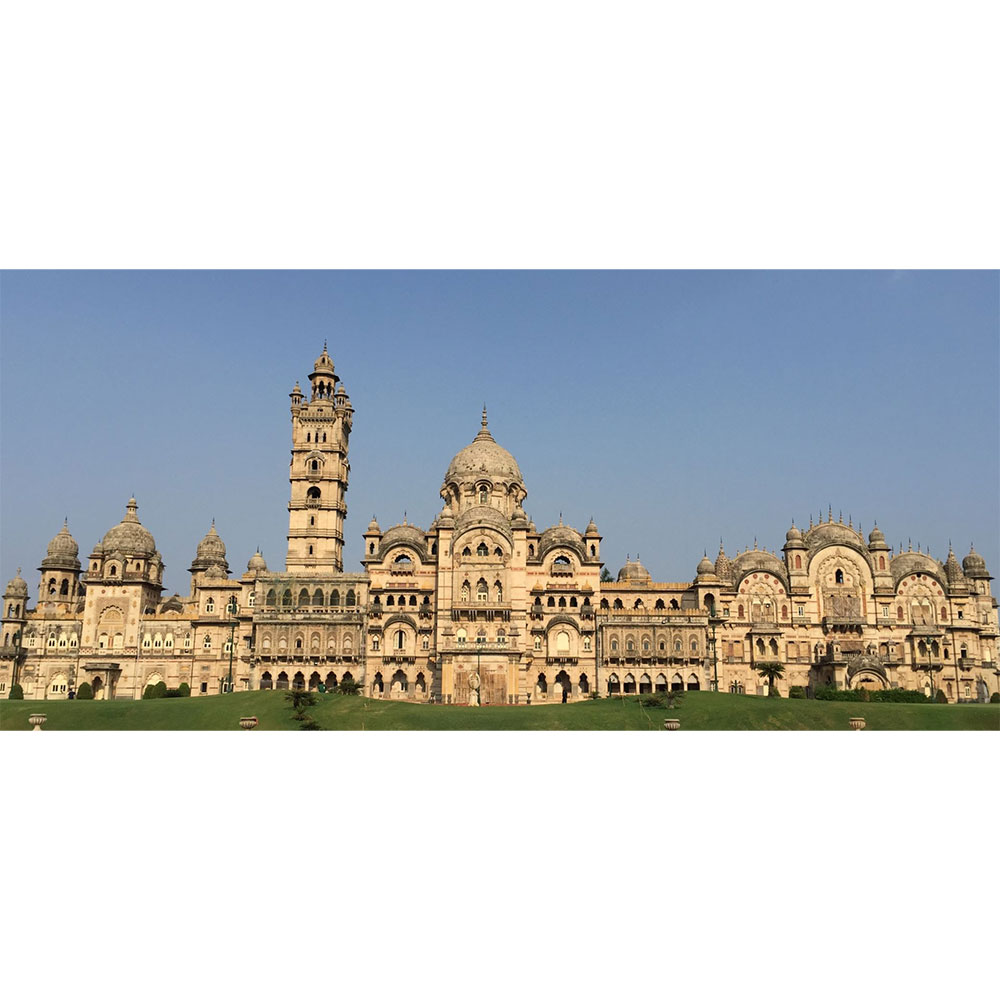
Lukshmi Vilas Palace
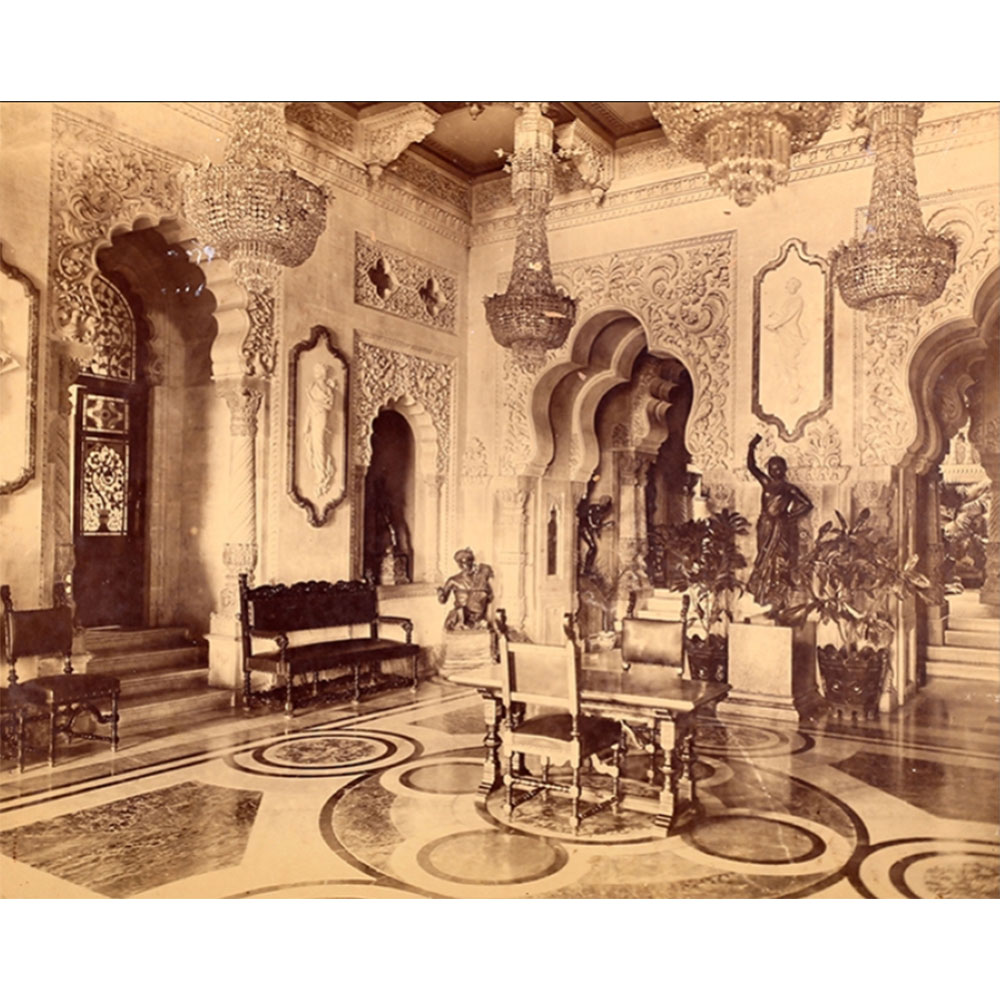
Lukshmi Vilas Palace entrance
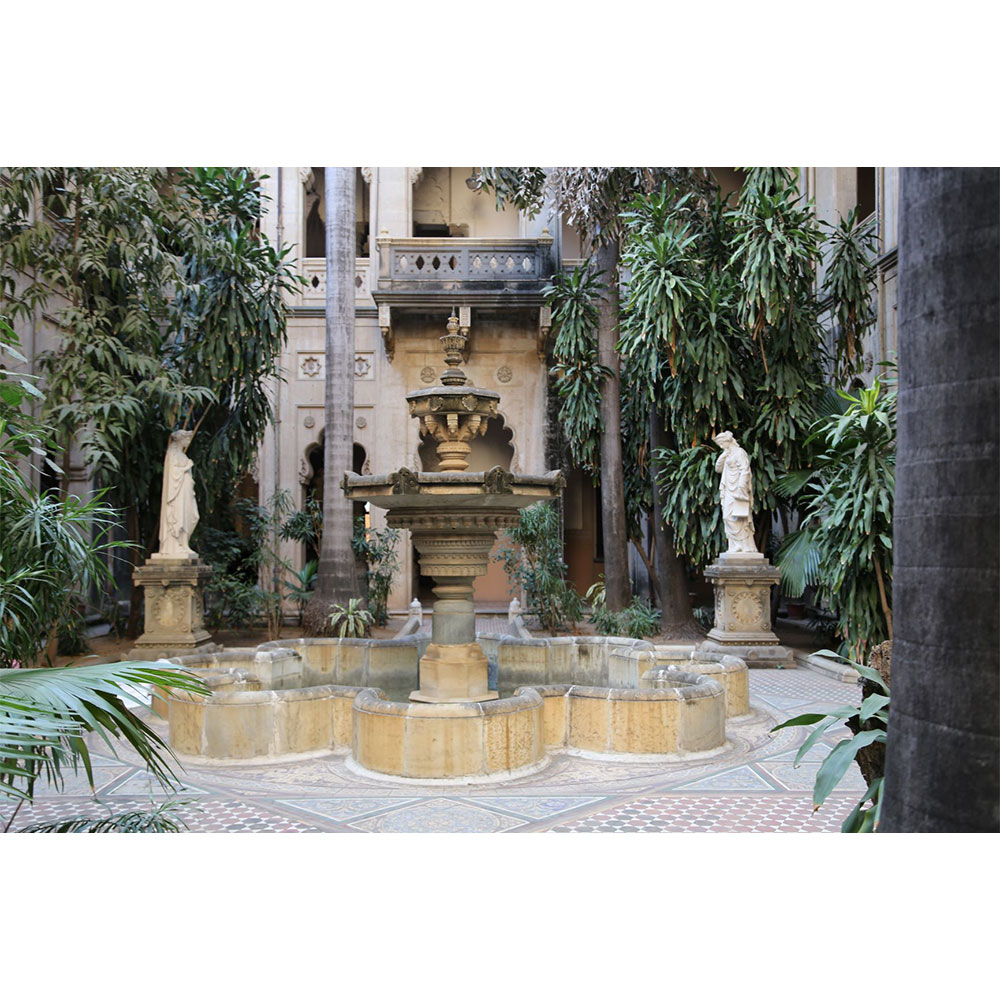
Lukshmi Vilas Palace courtyard
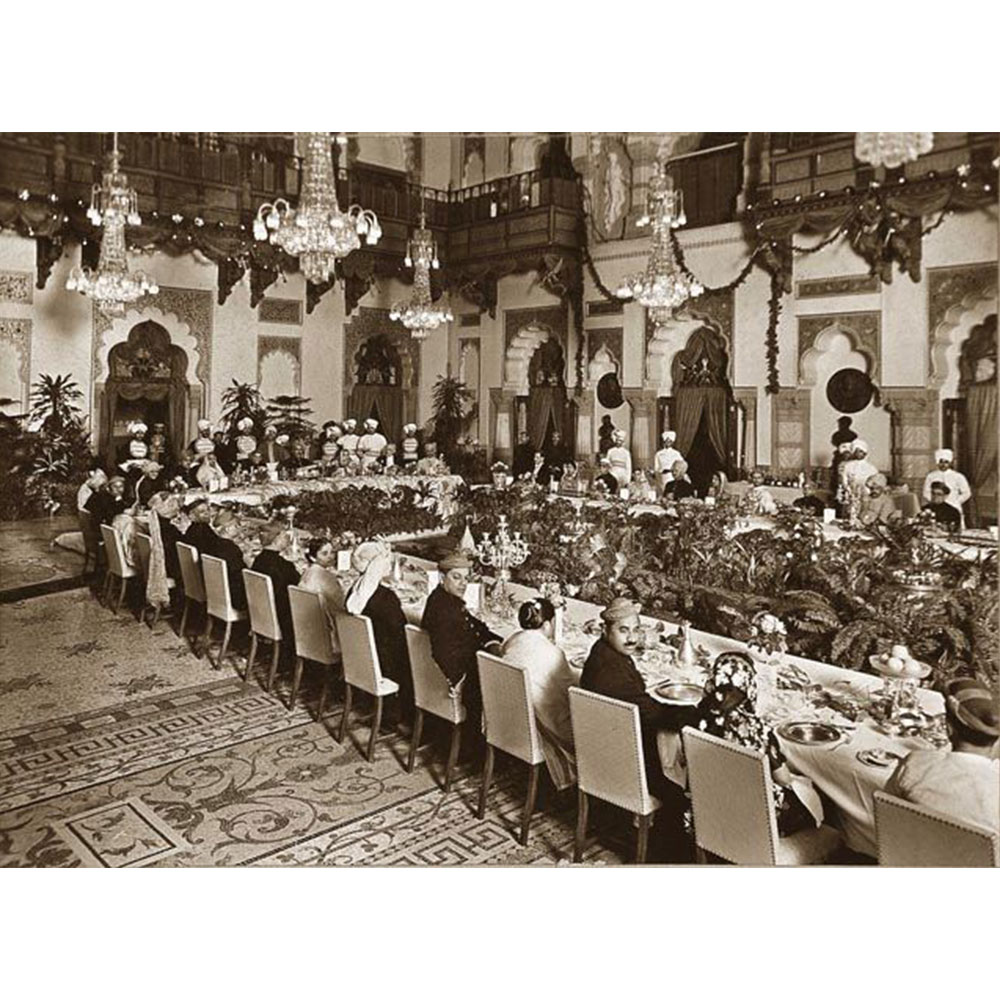
Lukshmi Vilas Palace, Durbar Hall
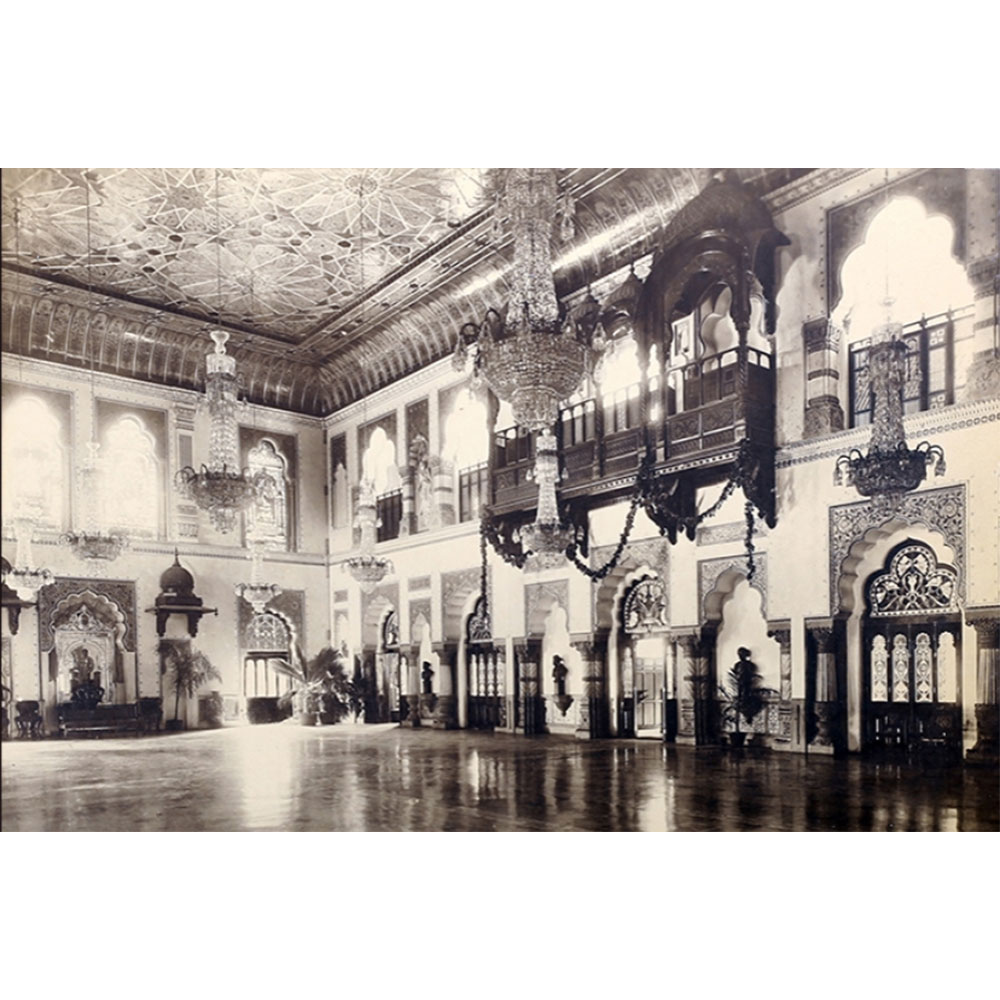
Lukshmi Vilas Palace, Durbar Hall
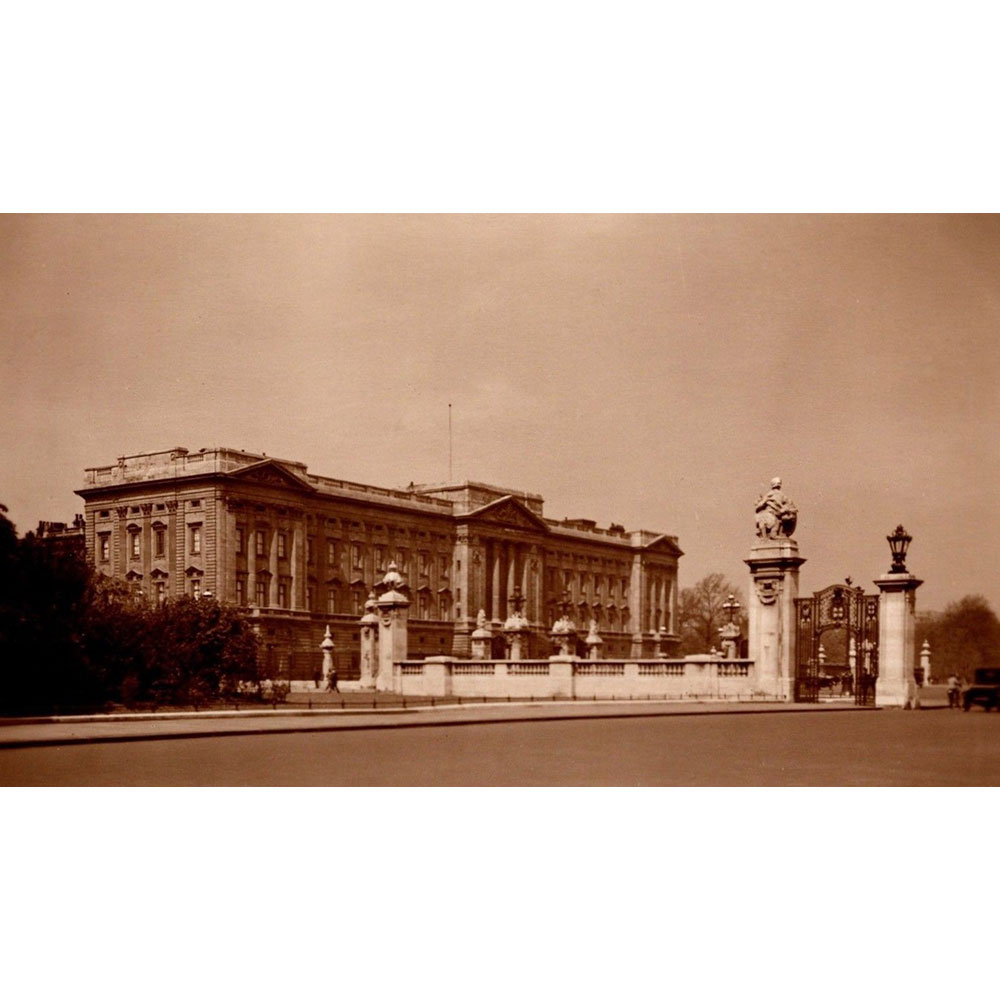
Buckingham Palace
The Lukshmi Vilas Palace Collection
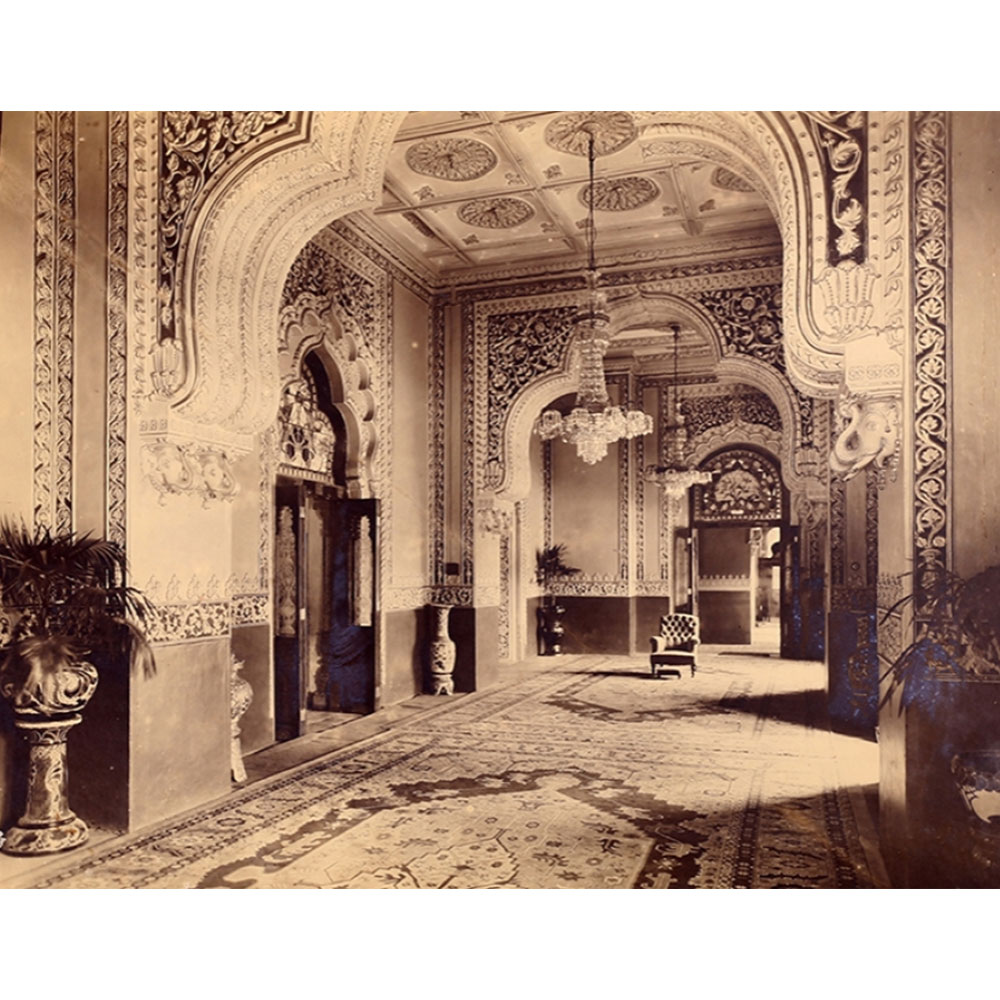
Hathi Hall at Lukshmi Vilas Palace with Doulton Jardiniere
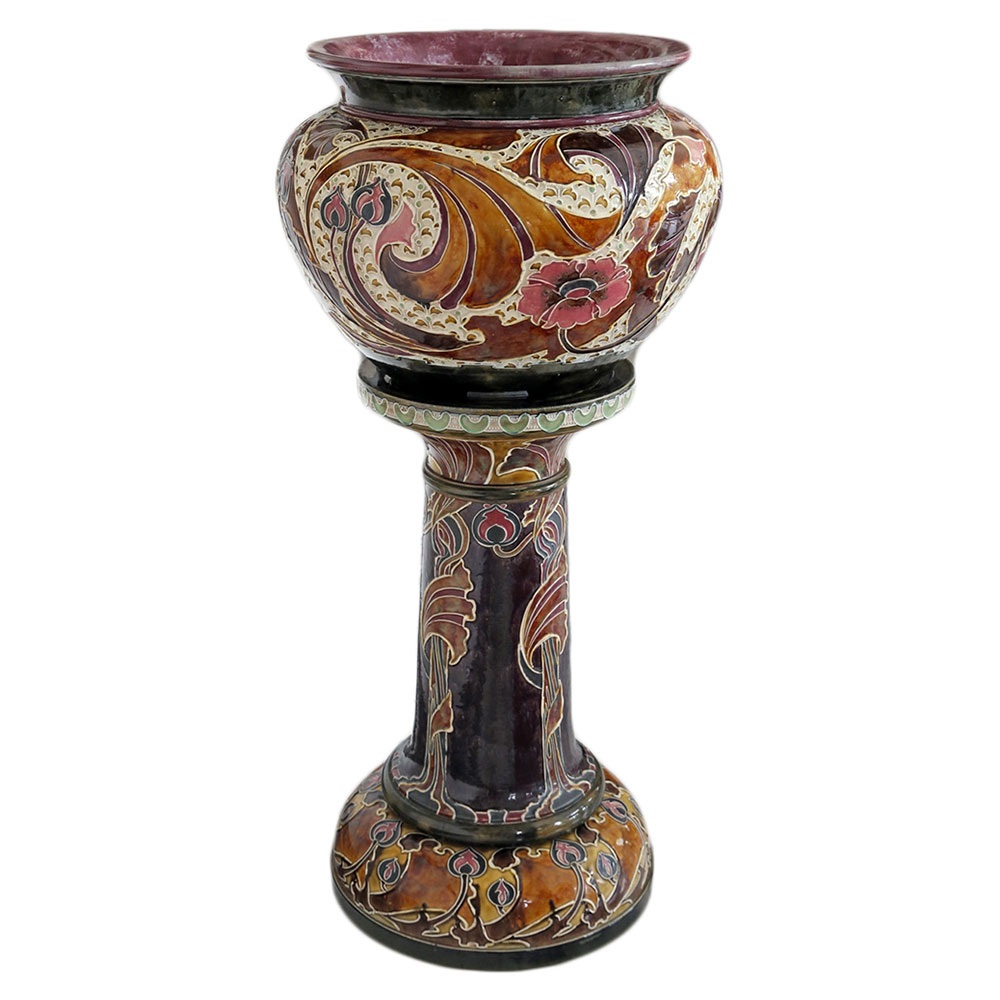
Doulton Jardiniere & Stand by M.V. Marshall
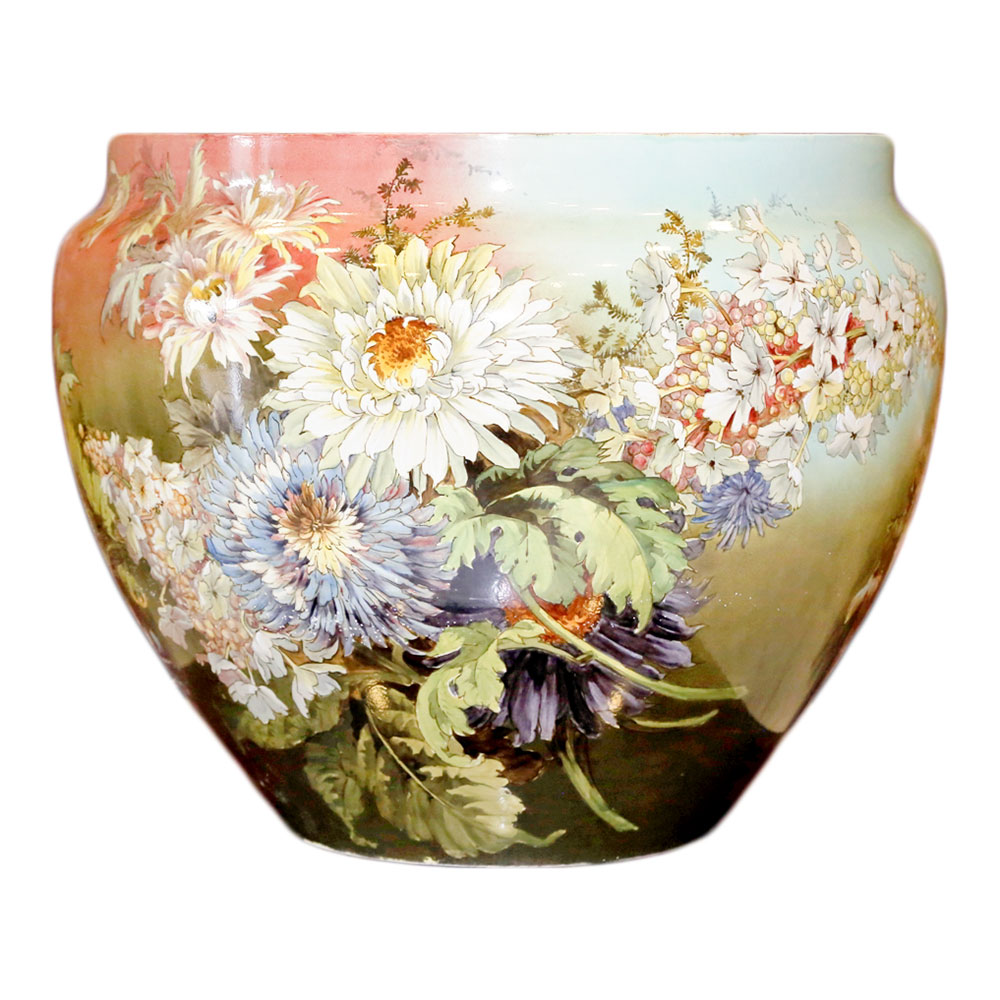
Doulton Lambeth Faience Planter by F. Lewis
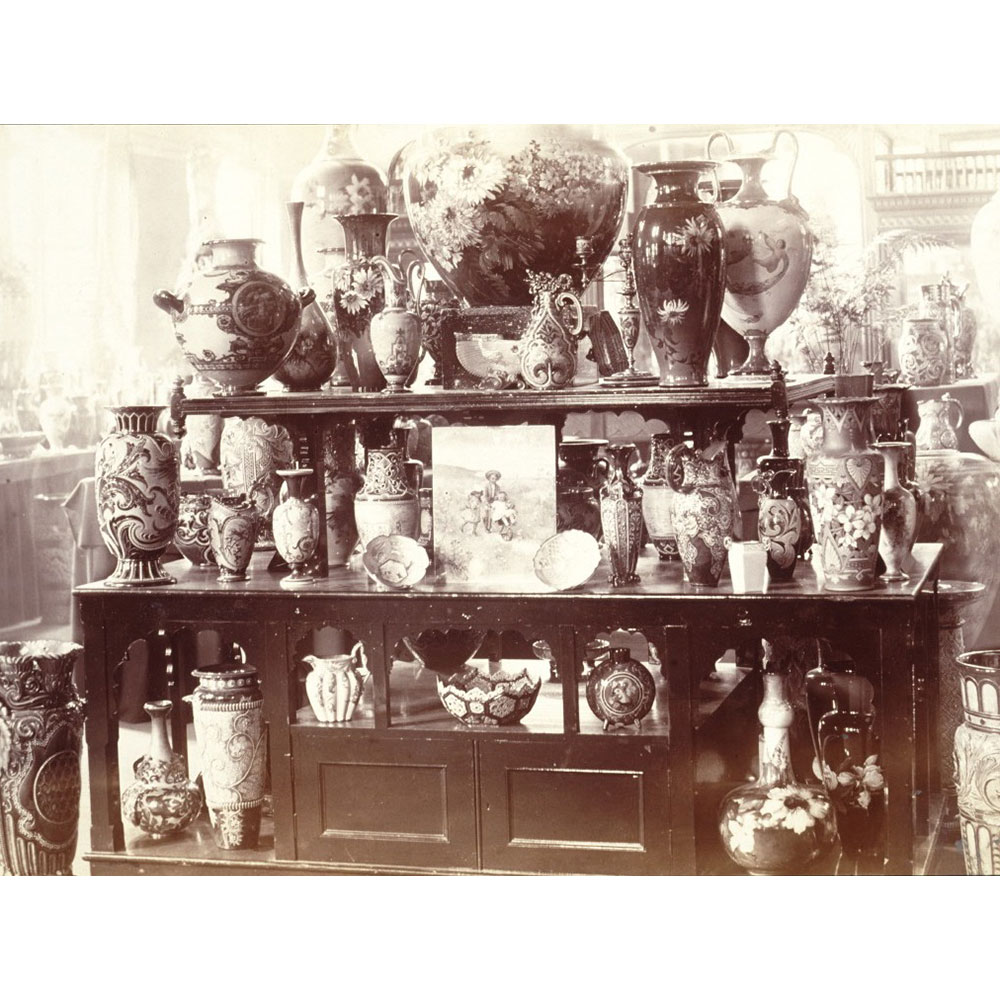
Doulton Showroom Display with the Faience Planter shown at the top
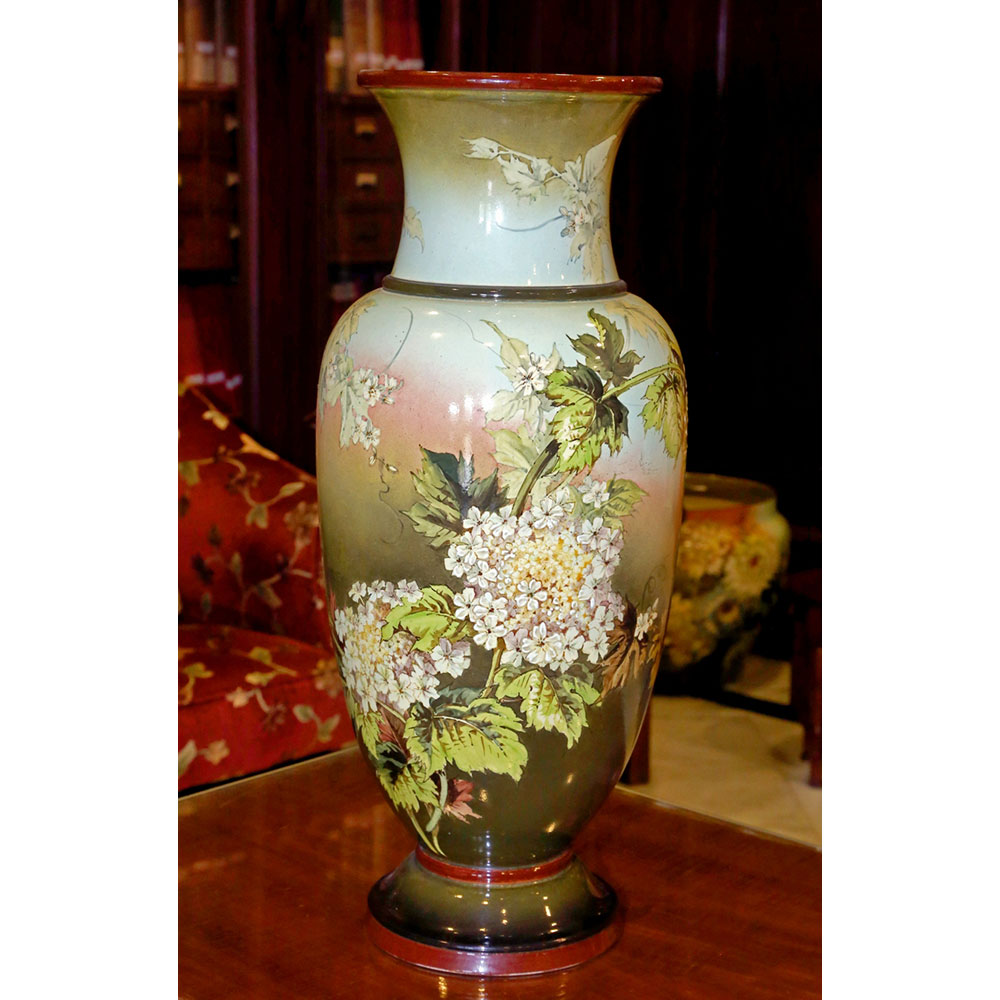
Doulton Lambeth Faience Vase by F. Lewis

Monumental Doulton Lambeth Faience Vase by F. Lewis
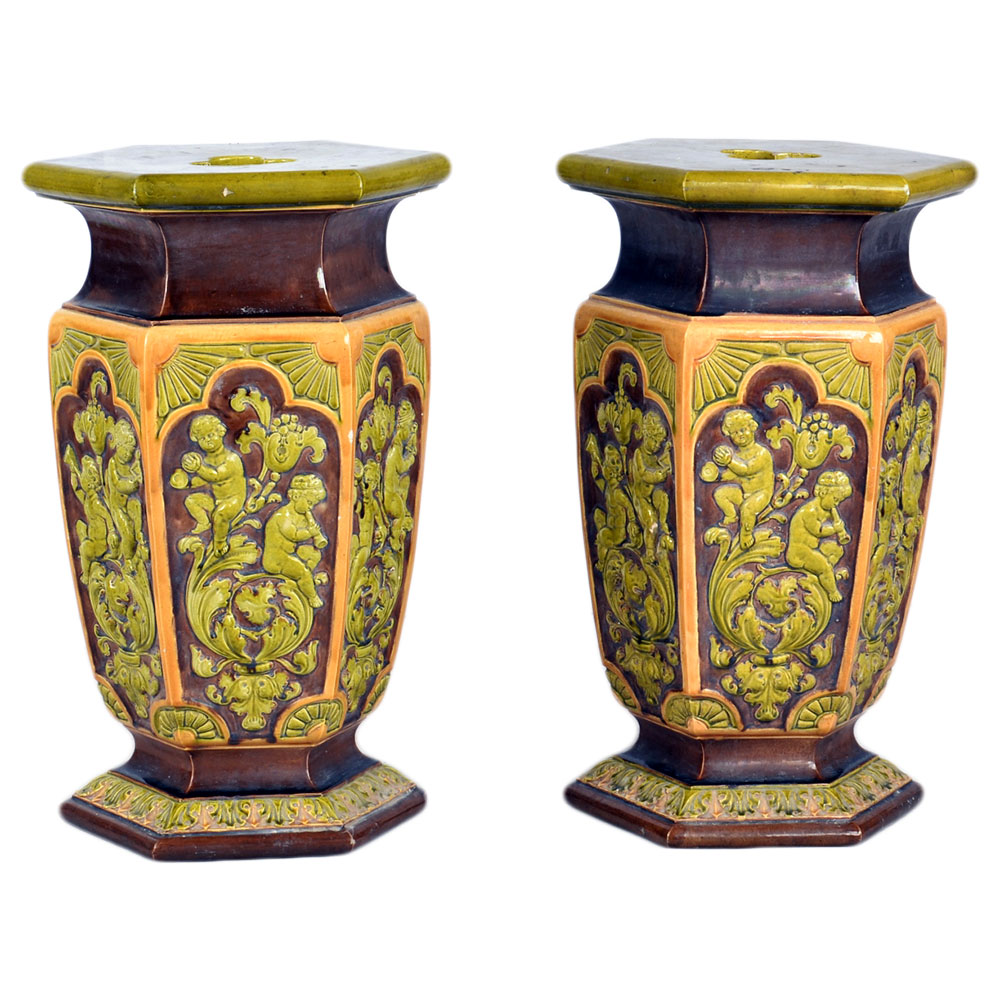
Doulton Majolica Pedestals
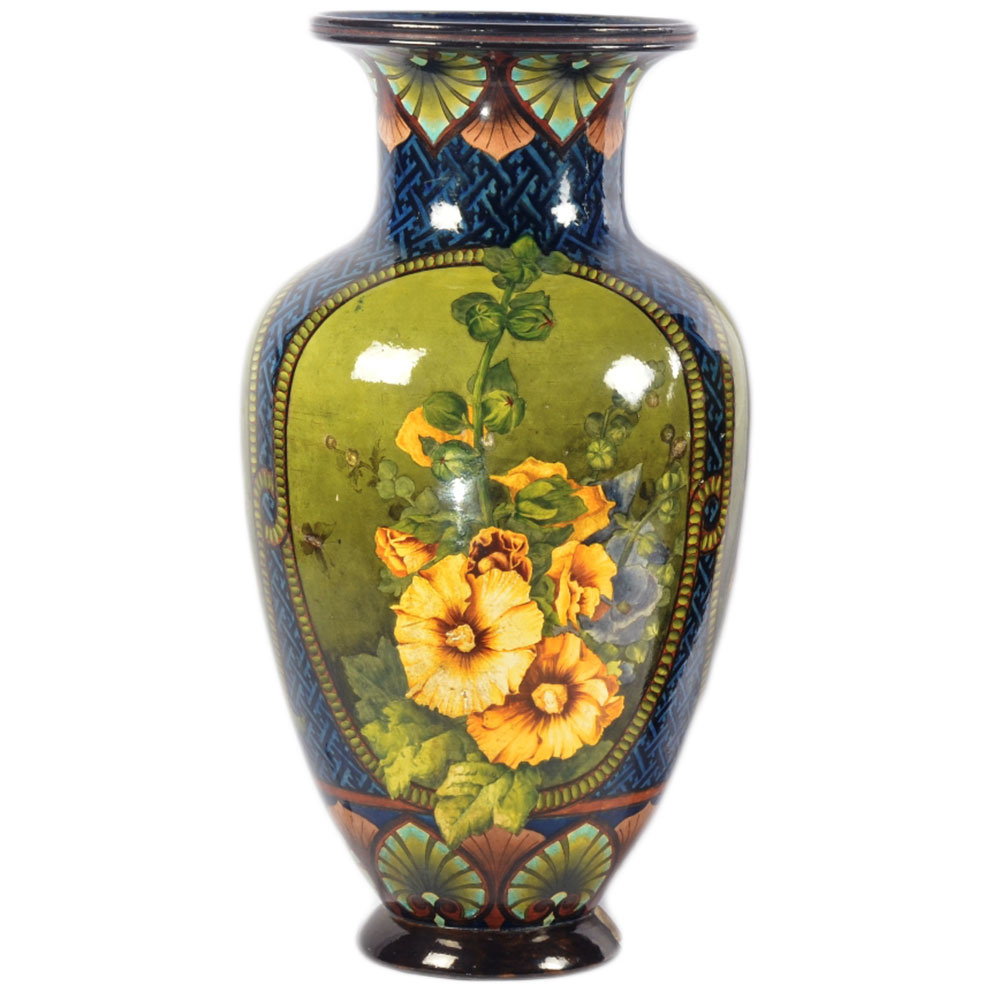
Doulton Lambeth Faience Vase by F. Lewis
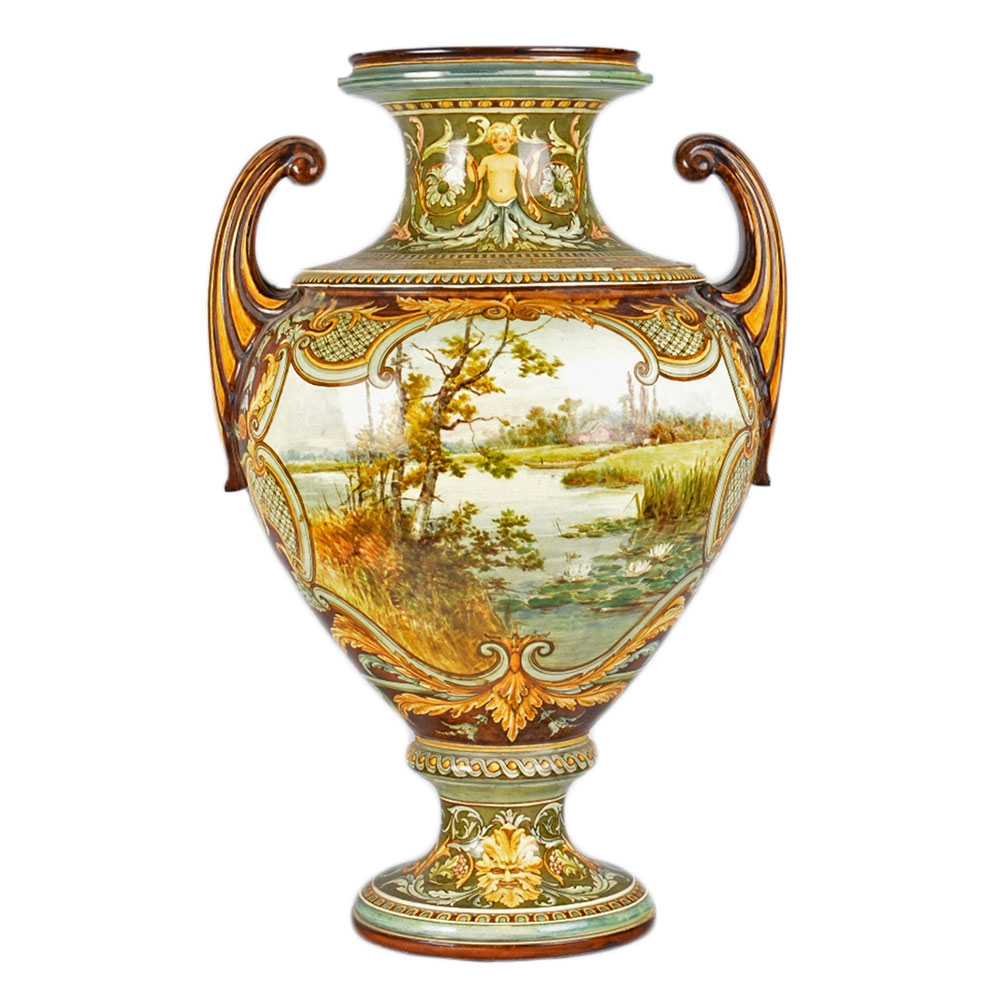
Doulton Lambeth Faience Vase by E. Lewis
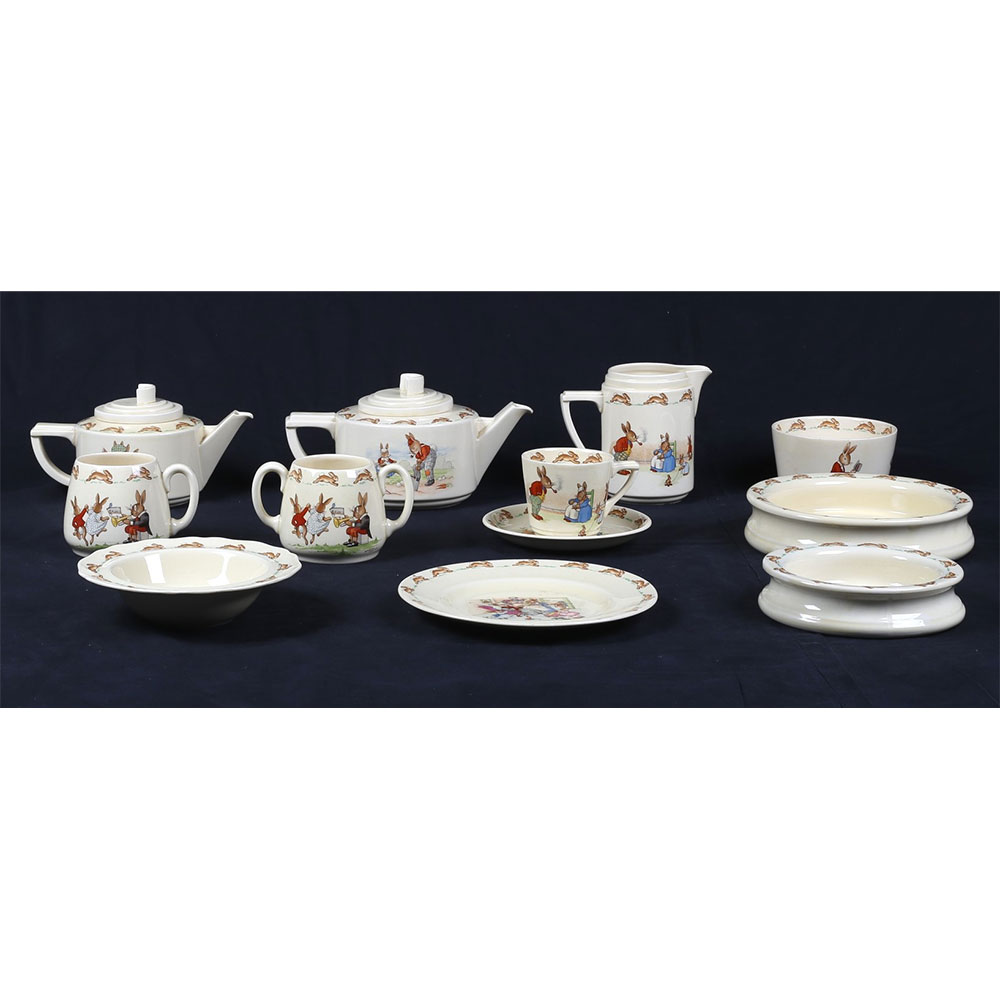
Royal Doulton Bunnykins Nursery Ware
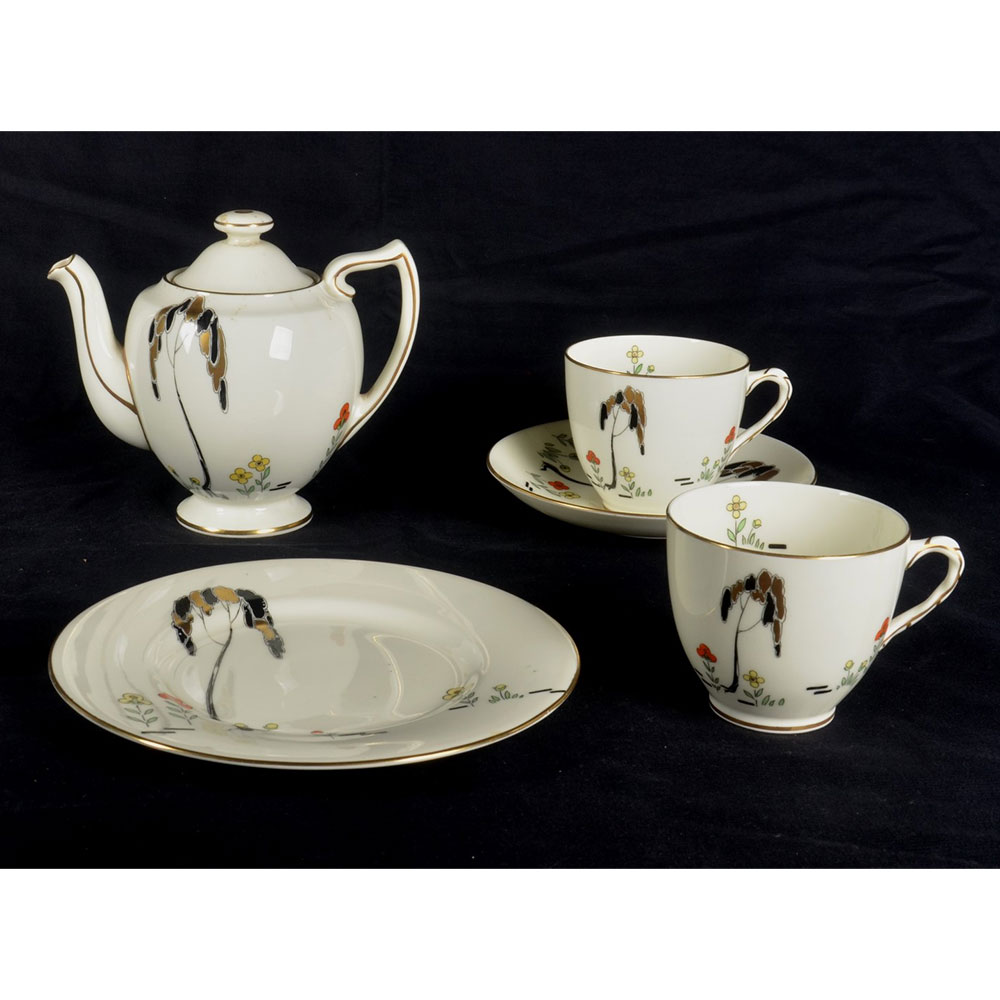
Royal Doulton Eden Tableware
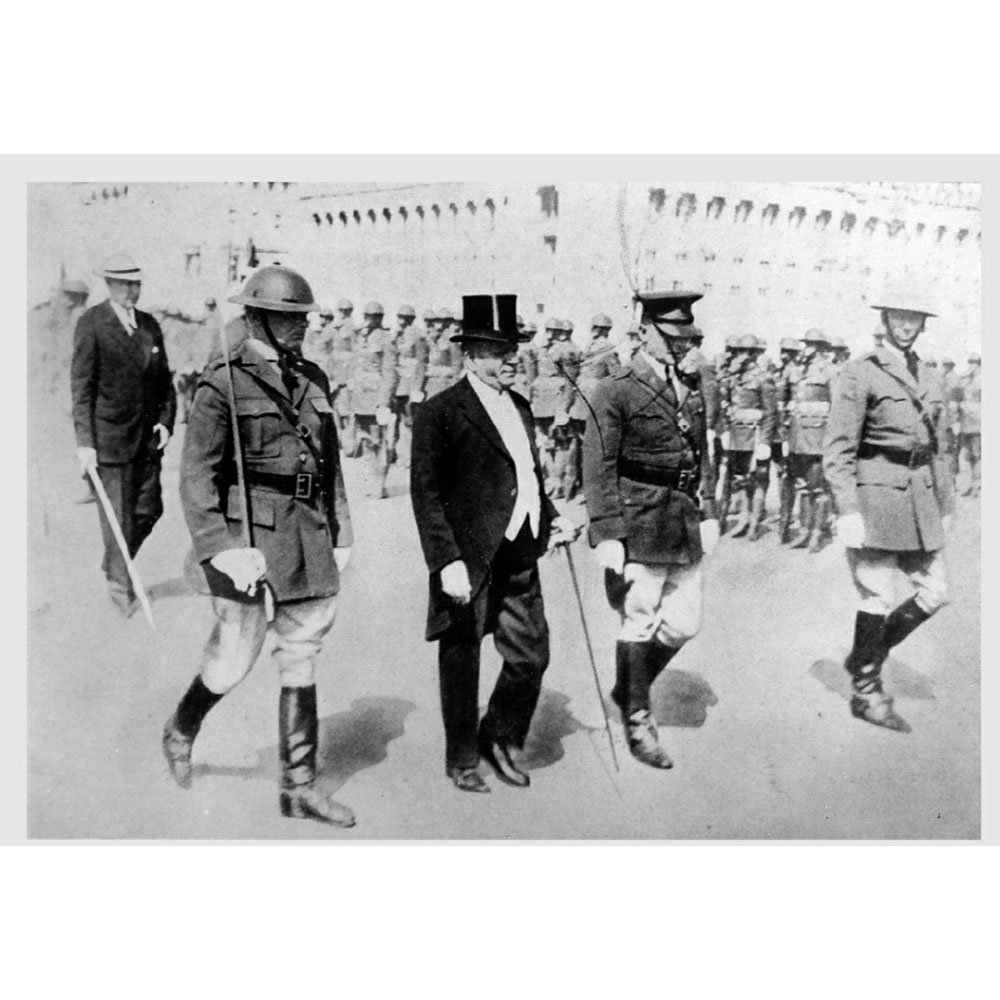
Maharaja Sayajiro III with a guard of honor in Chicago 1933
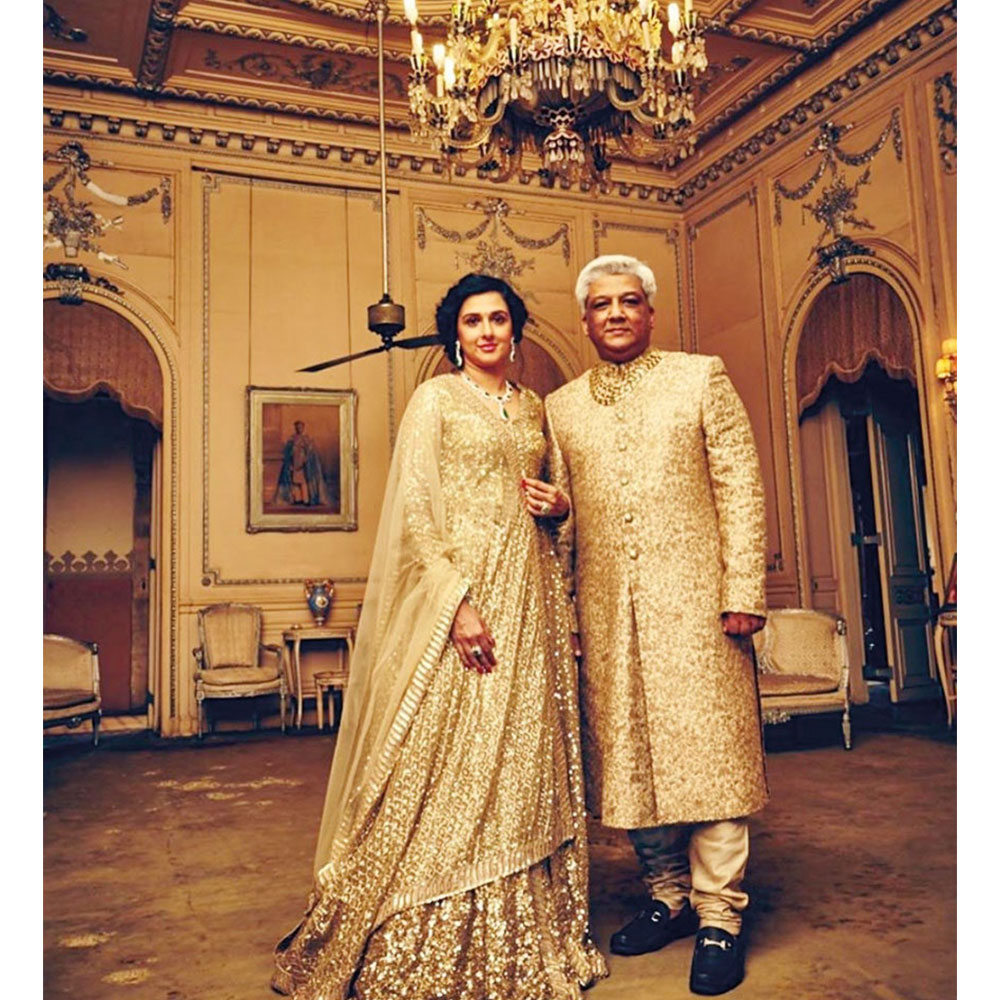
Maharaja Samarjitsinh Gaekwad and Maharani Rhadikaraje Gaekwad
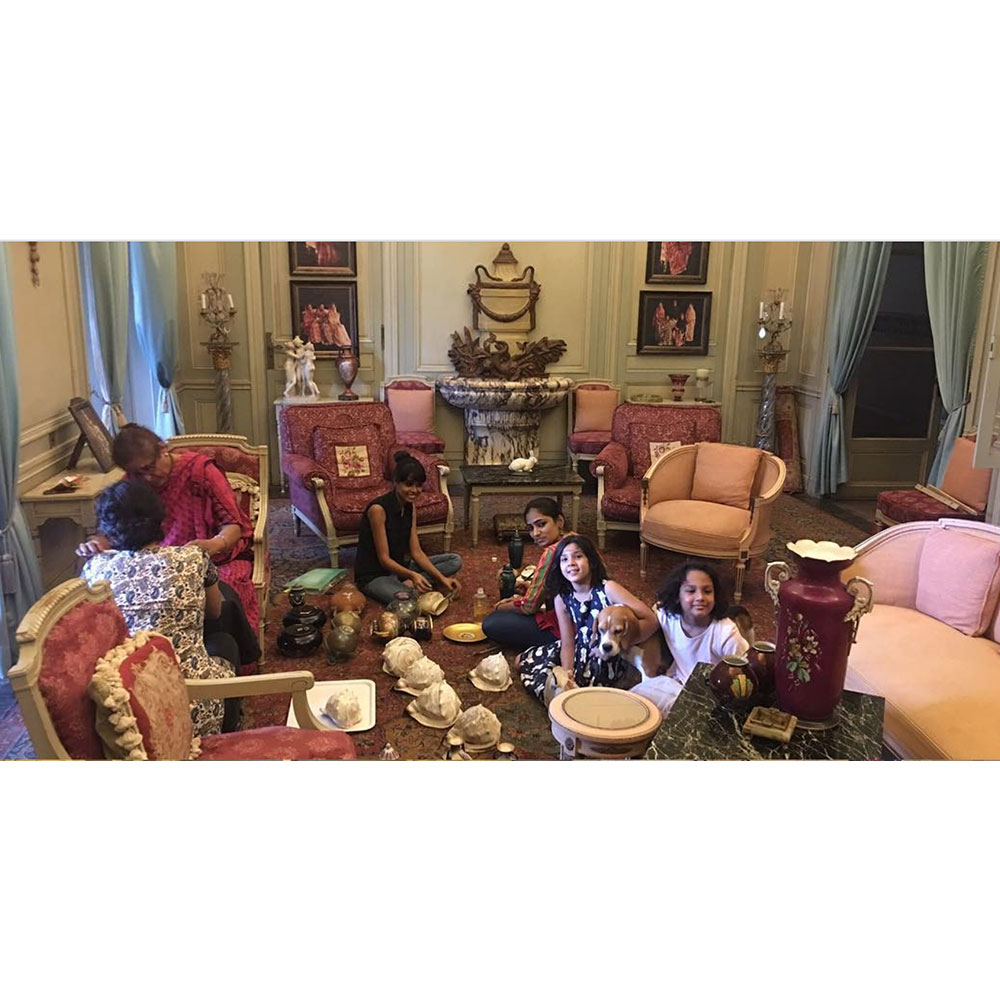
The Maharani’s family documenting the collection at the palace
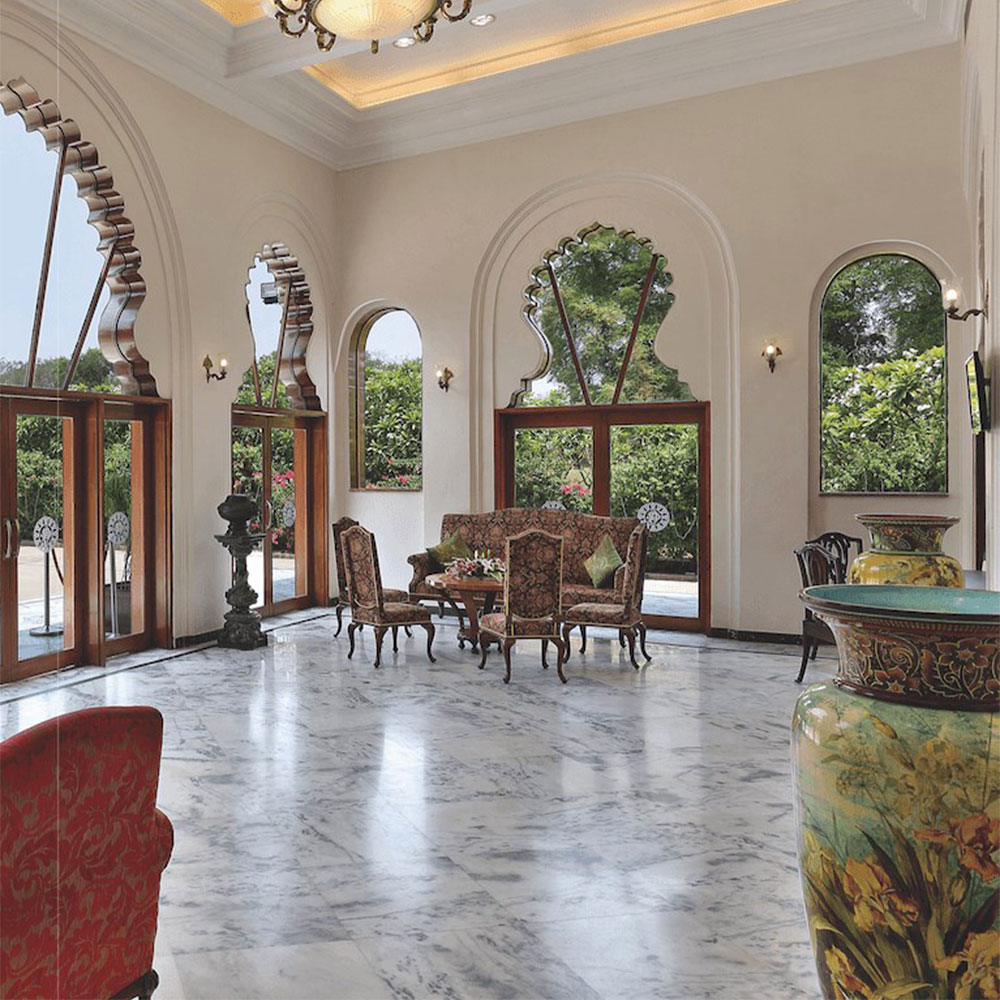
Monumental Lambeth Faience Vases in the Palace Reception
Photos from Lukshmi Vilas Palace courtesy of HH. Maharani Radhikaraje Gaekwad
